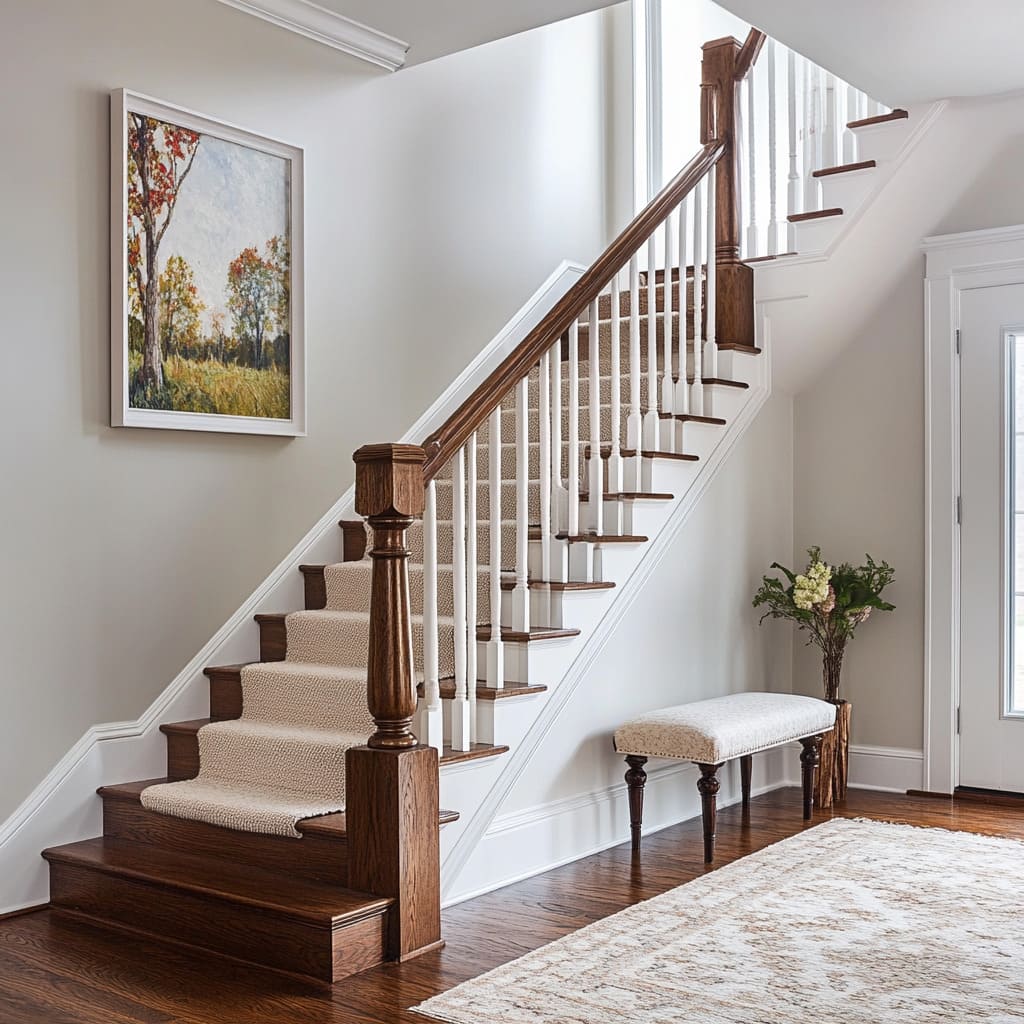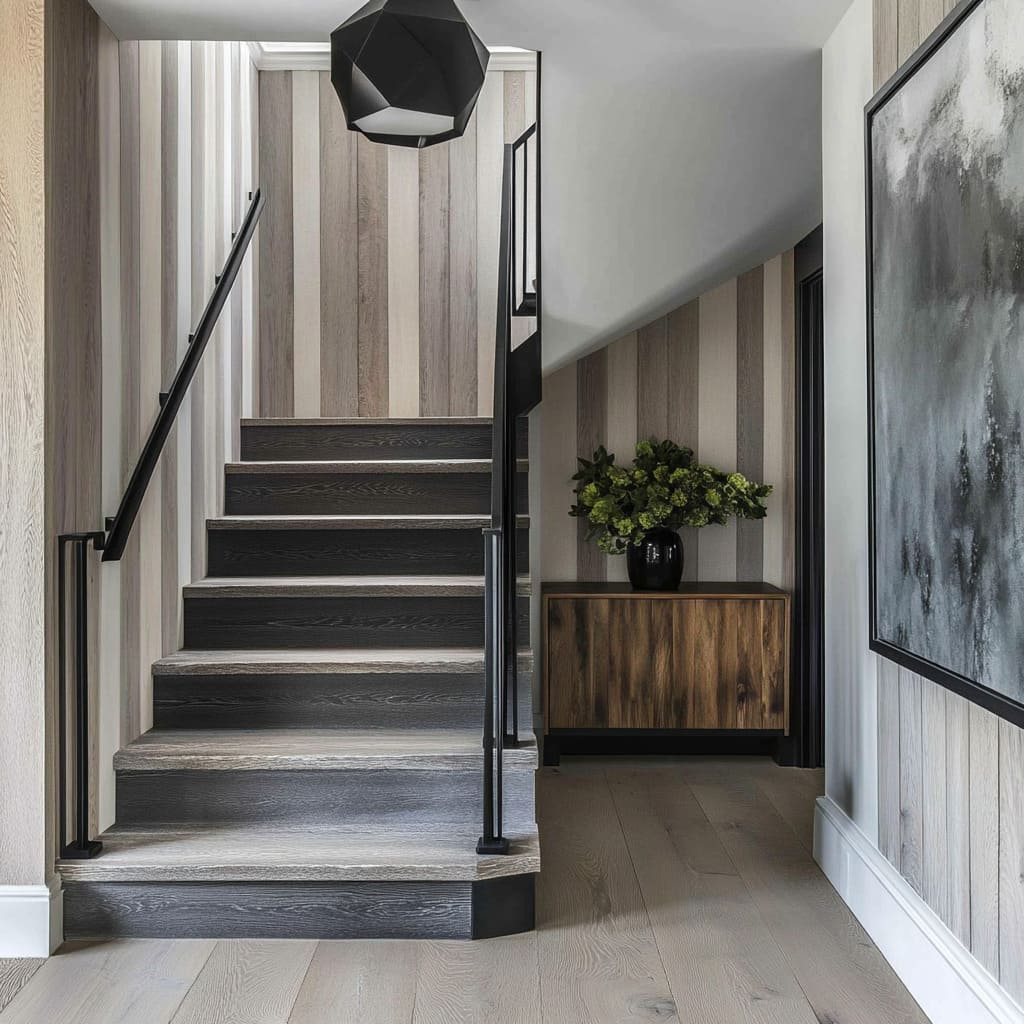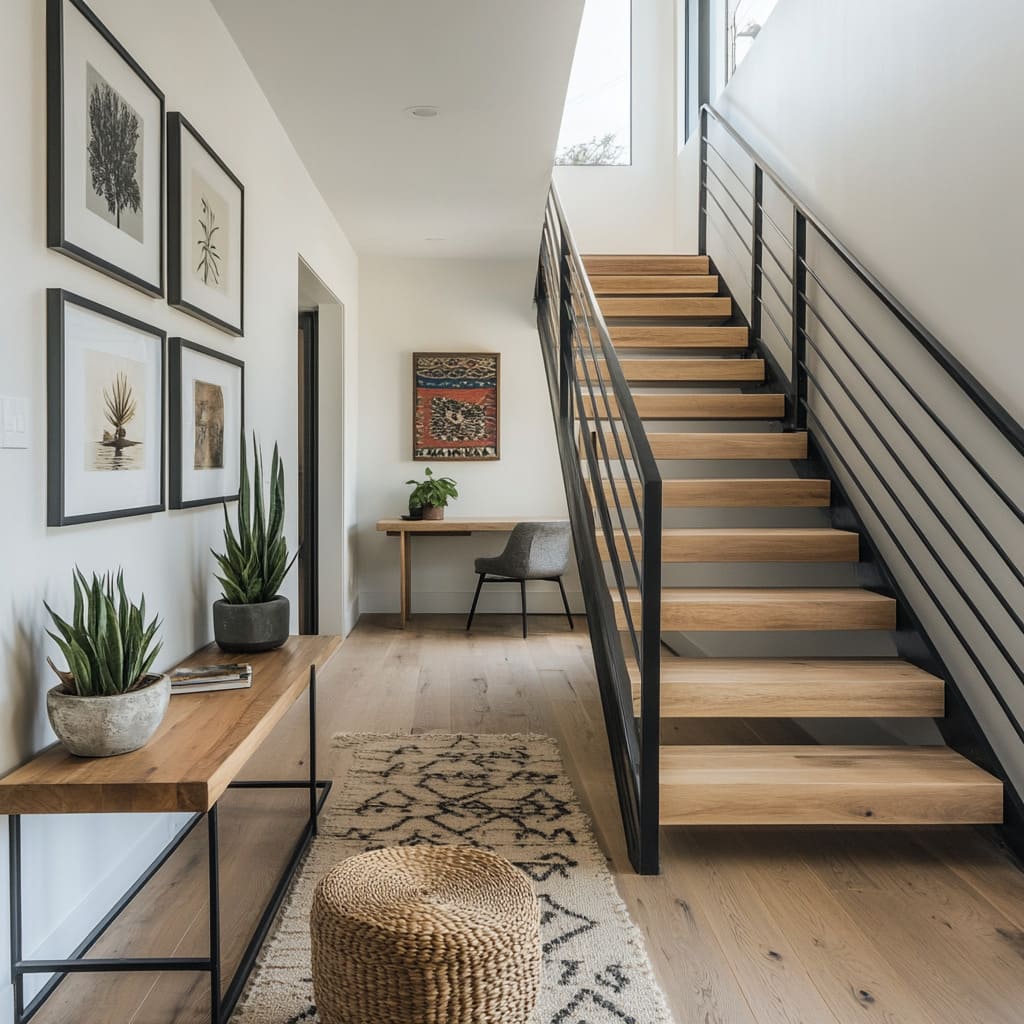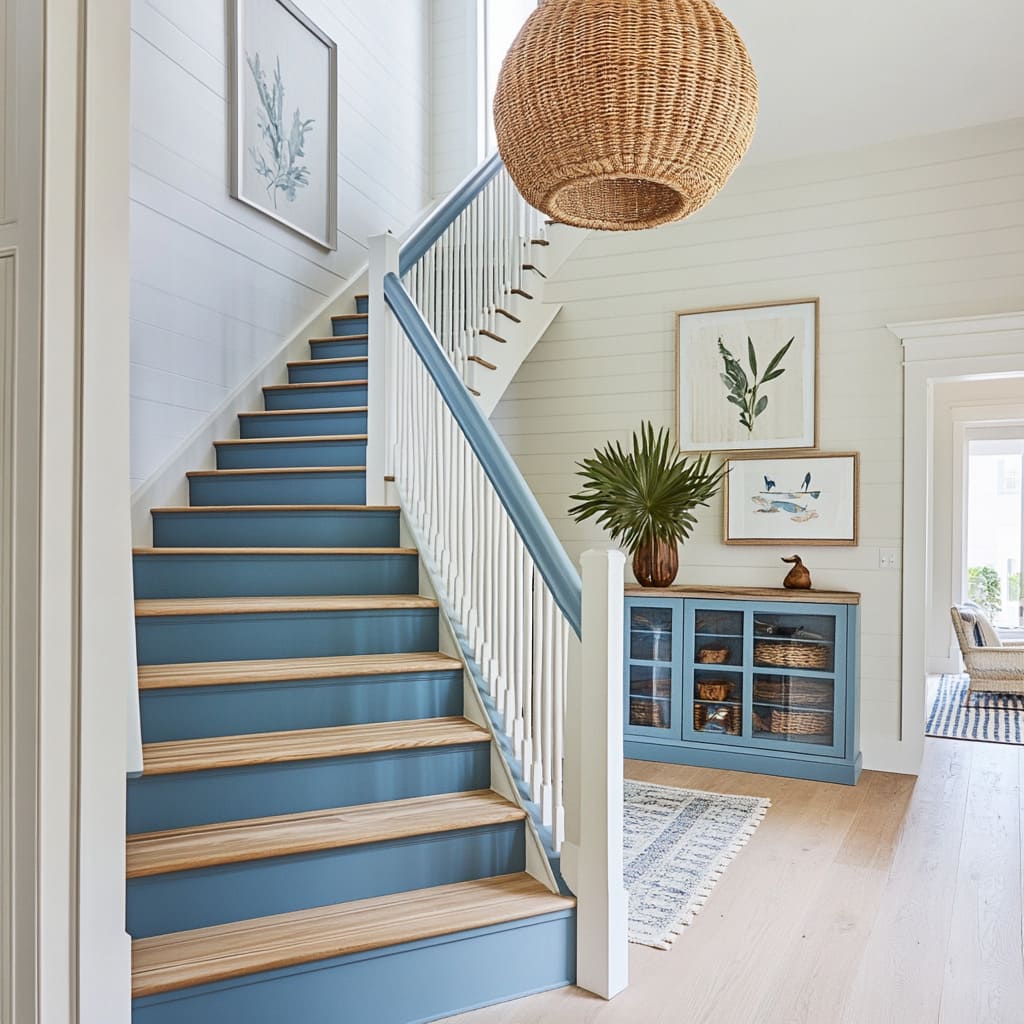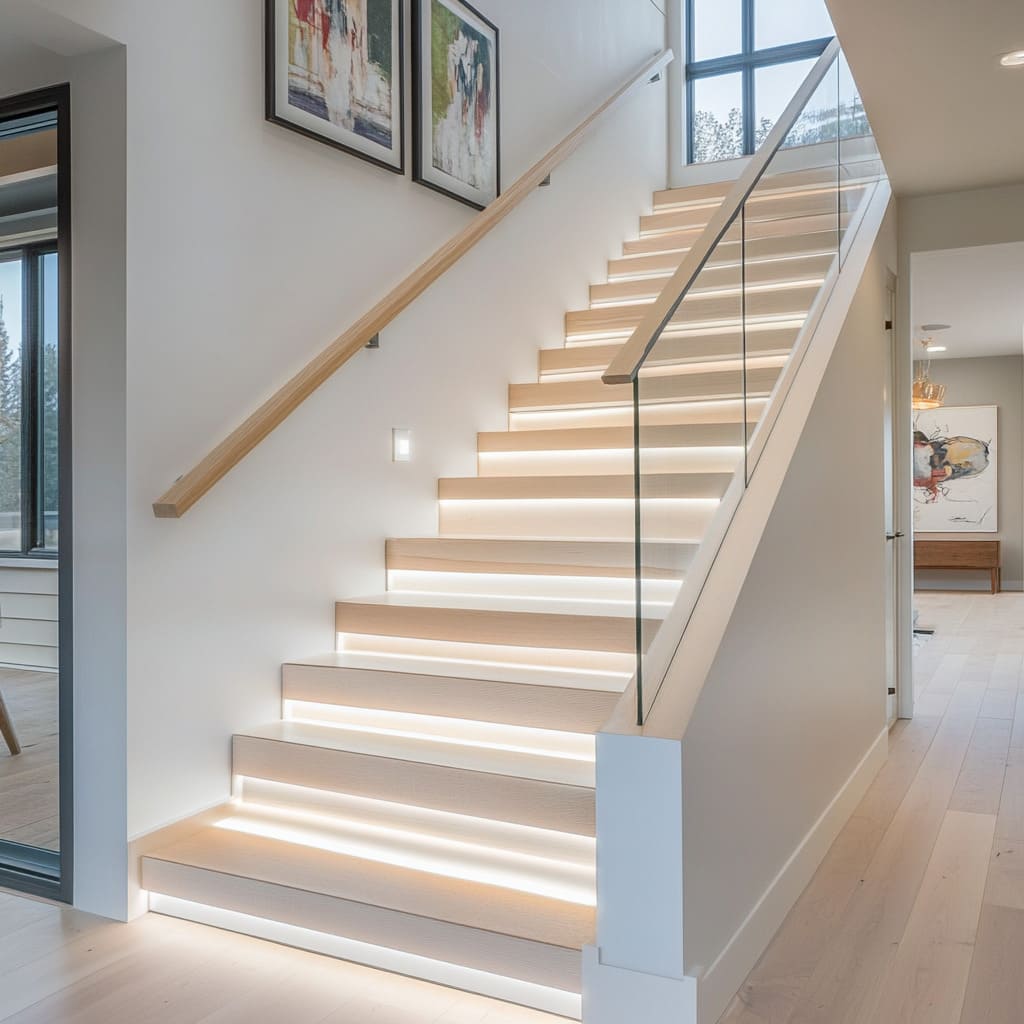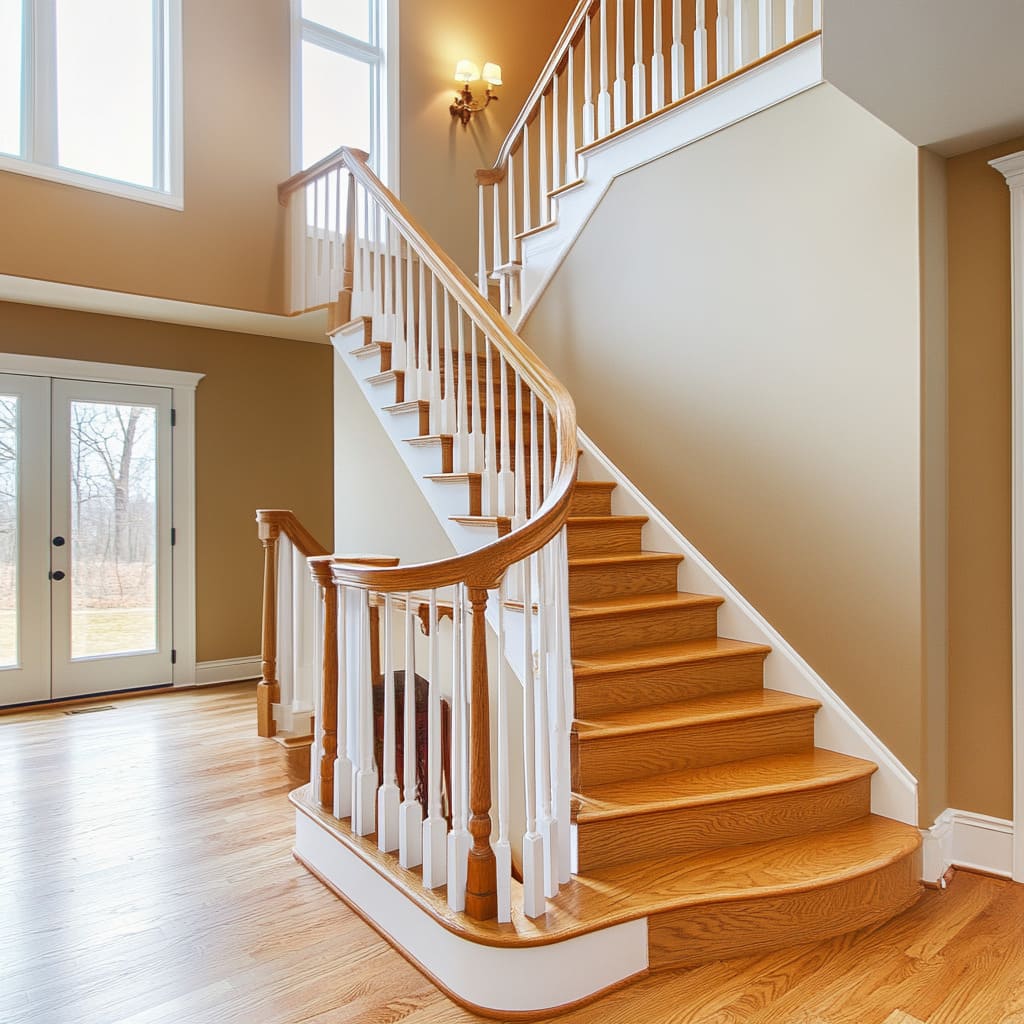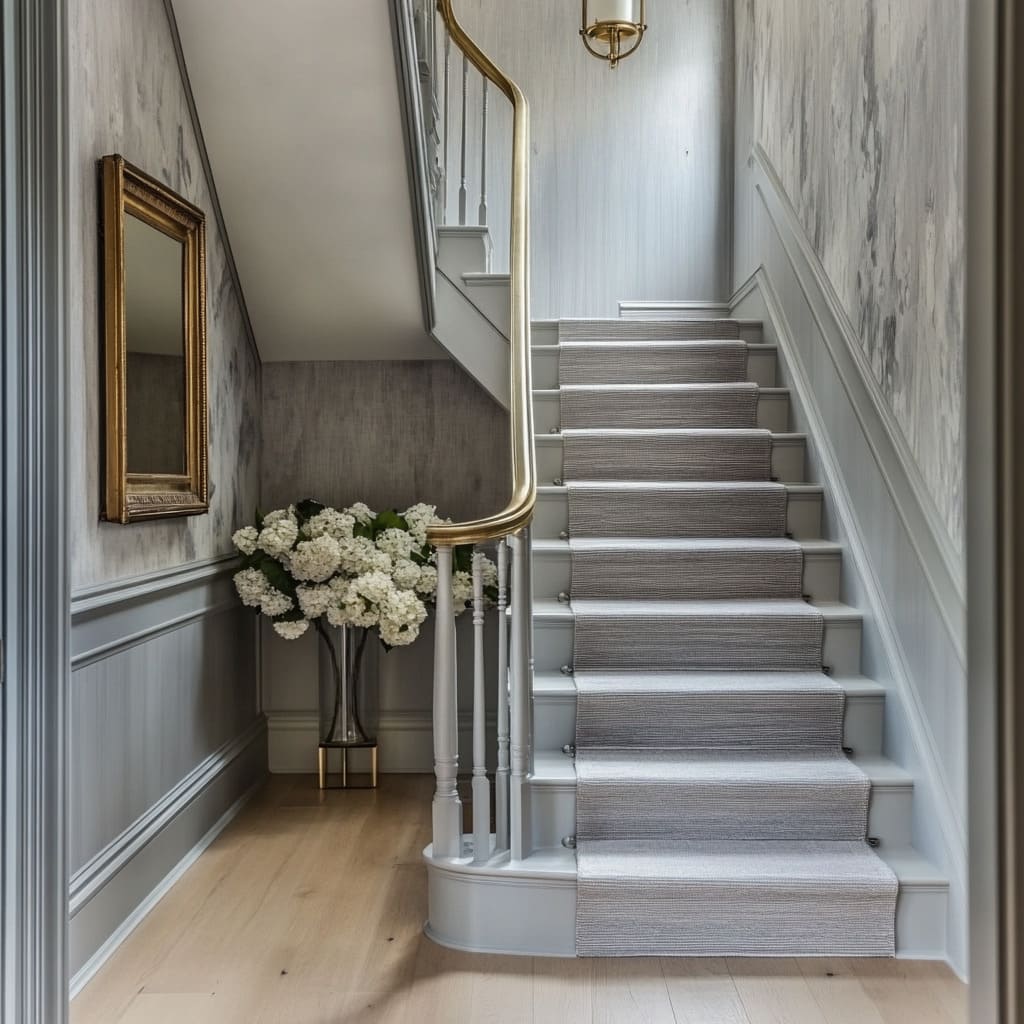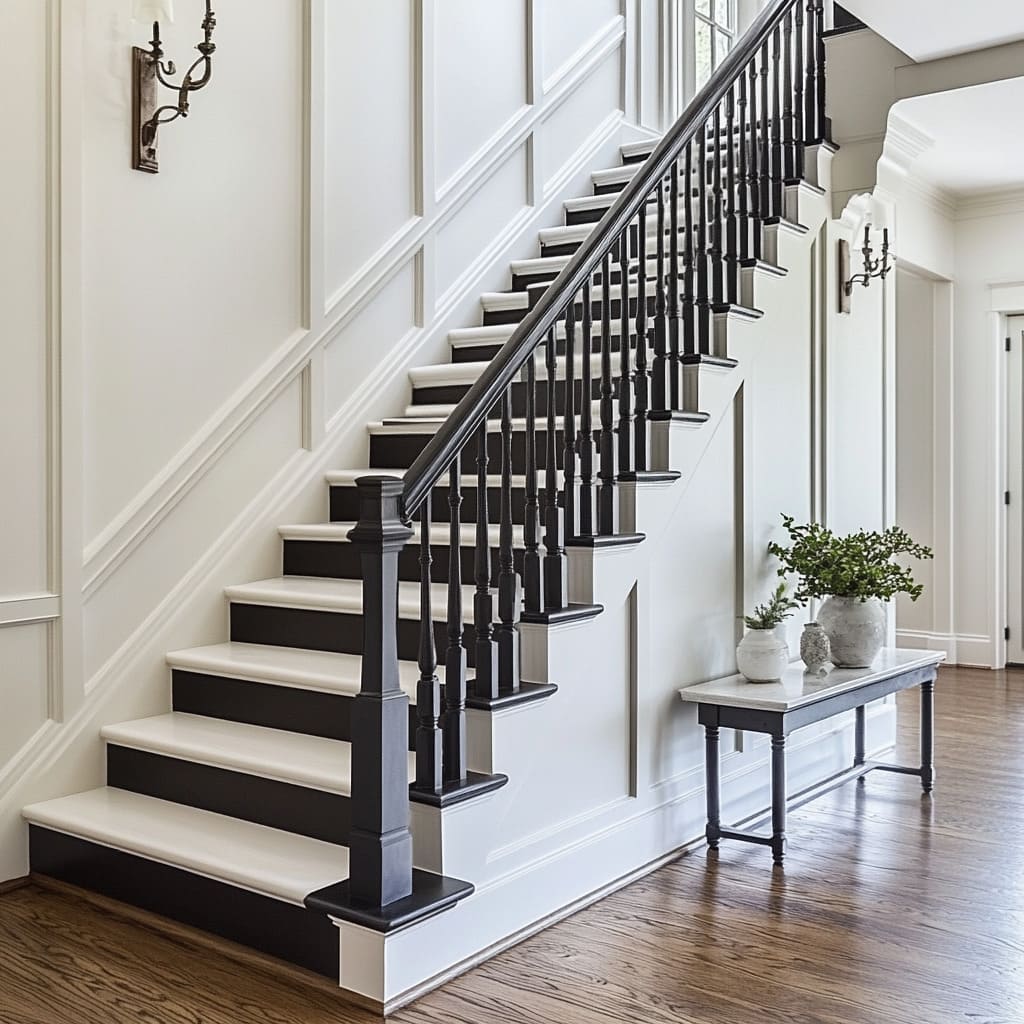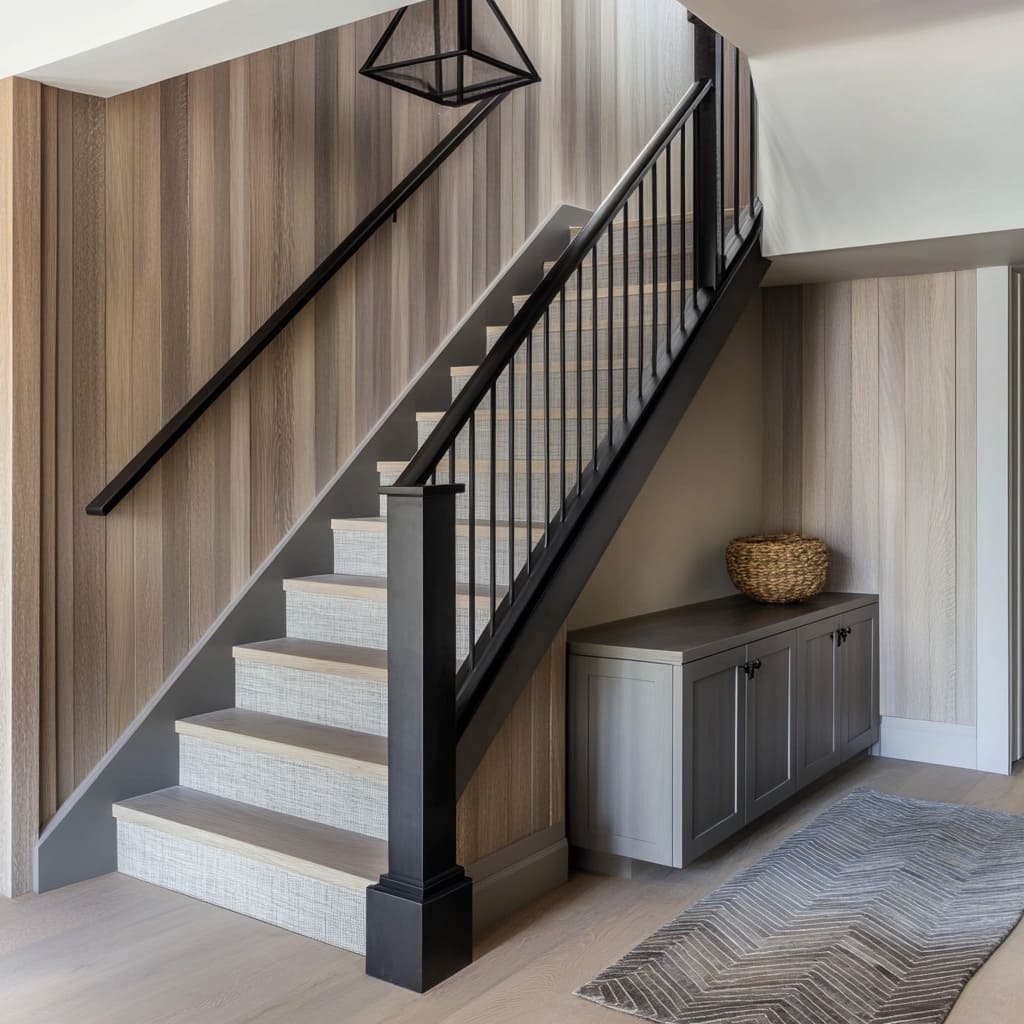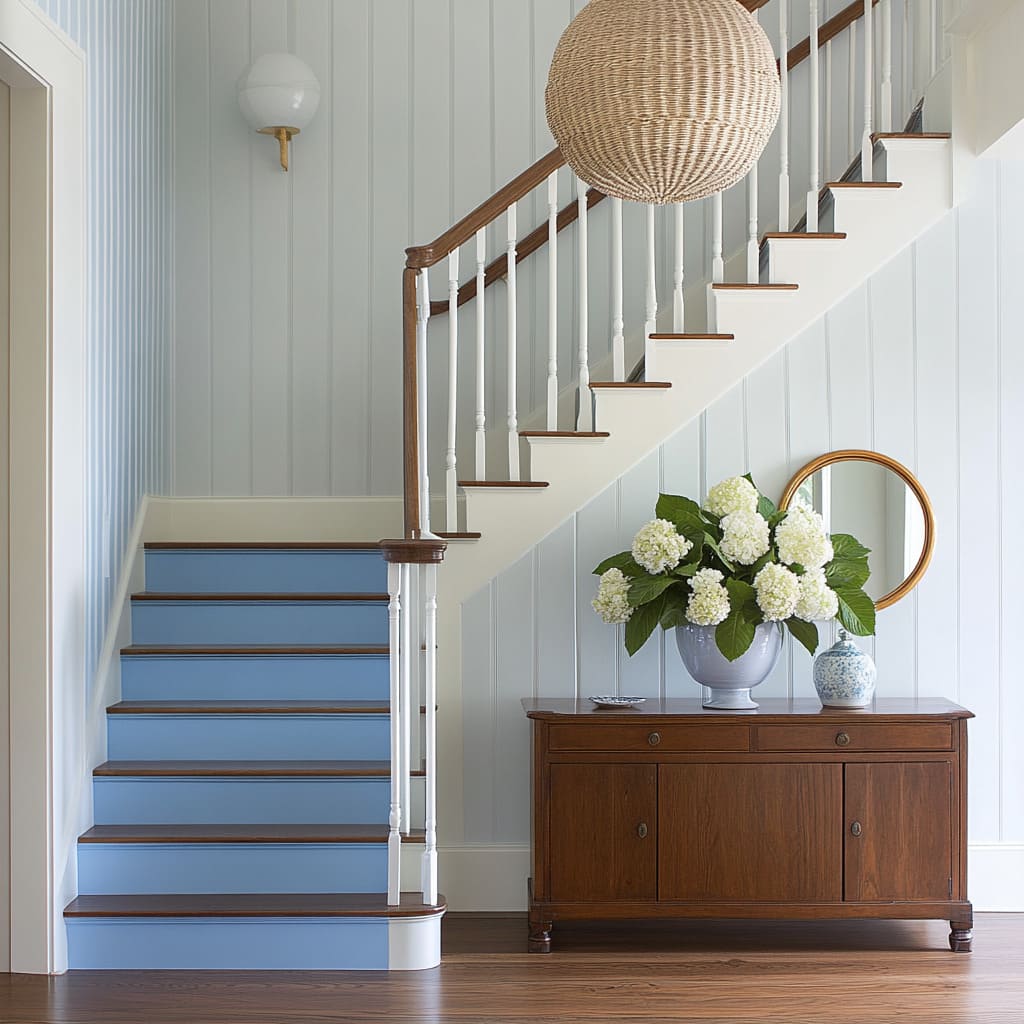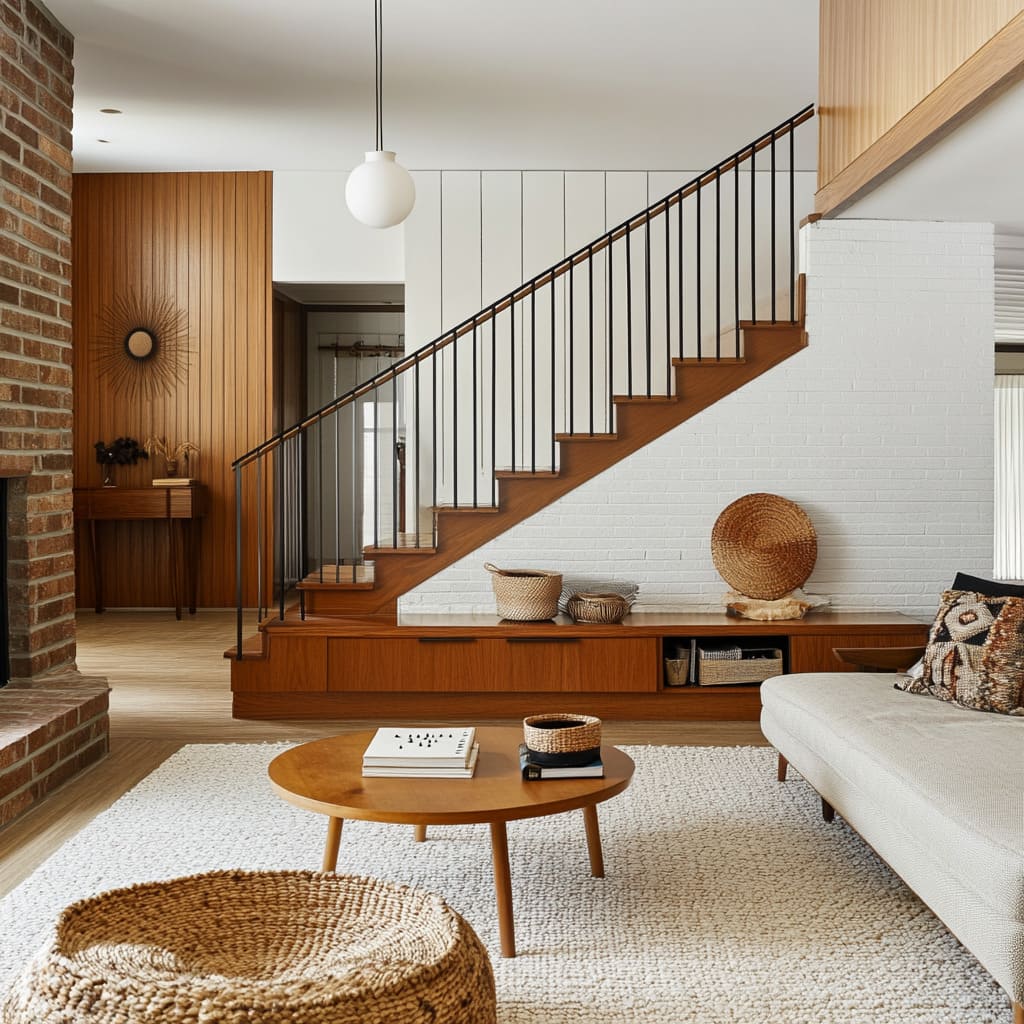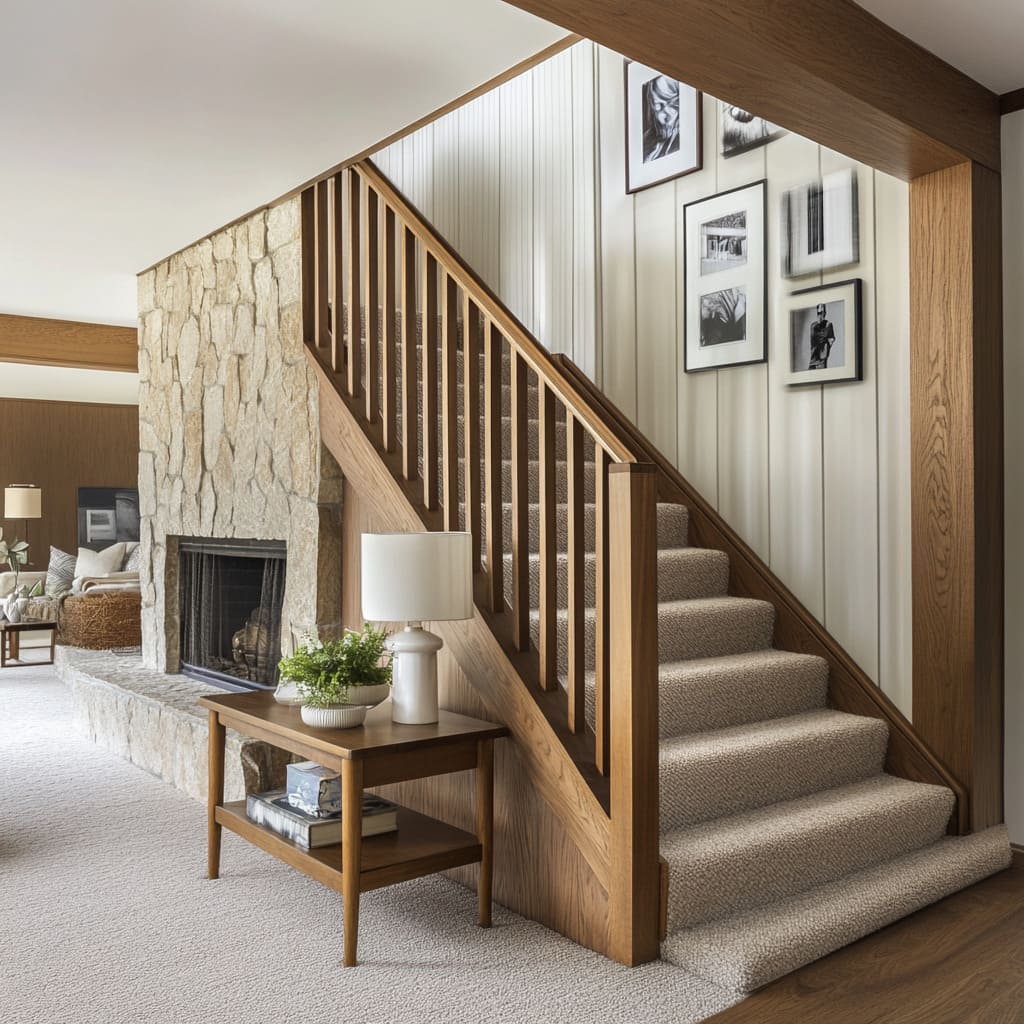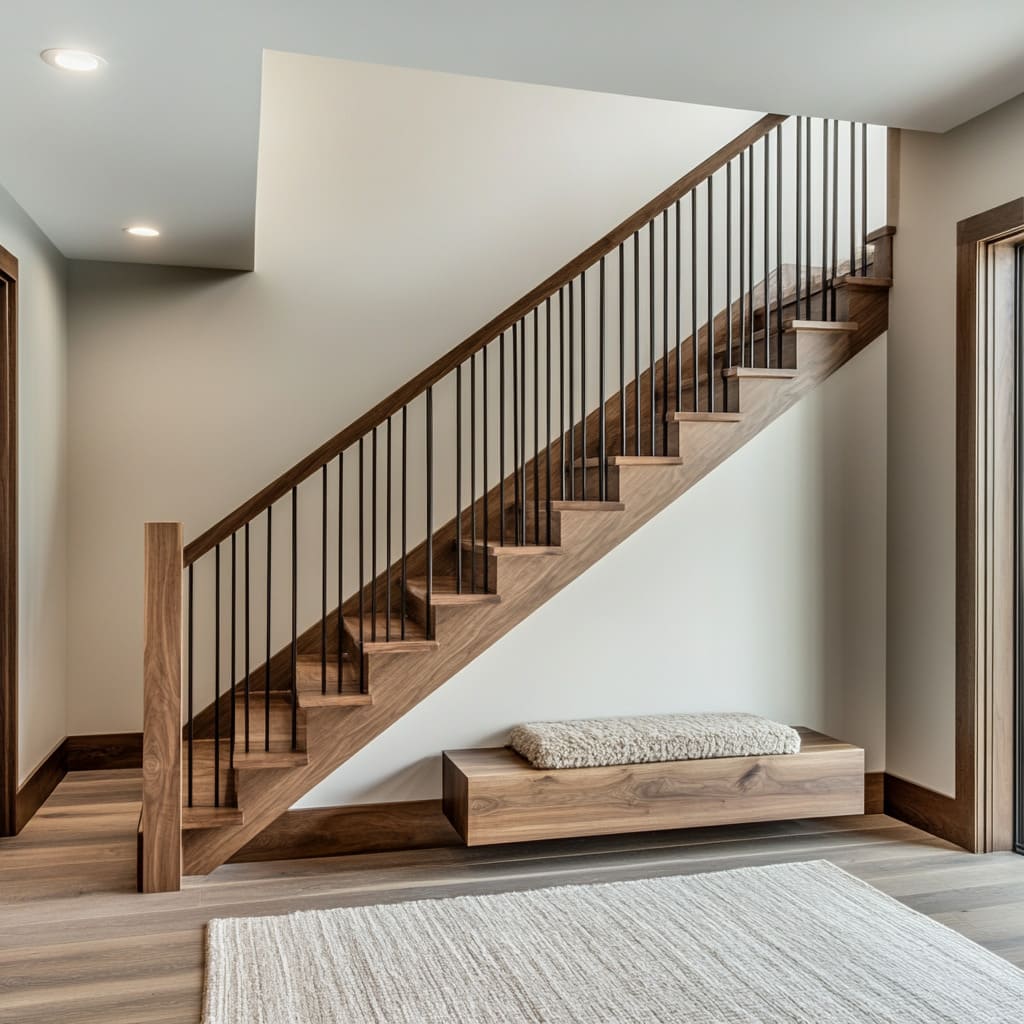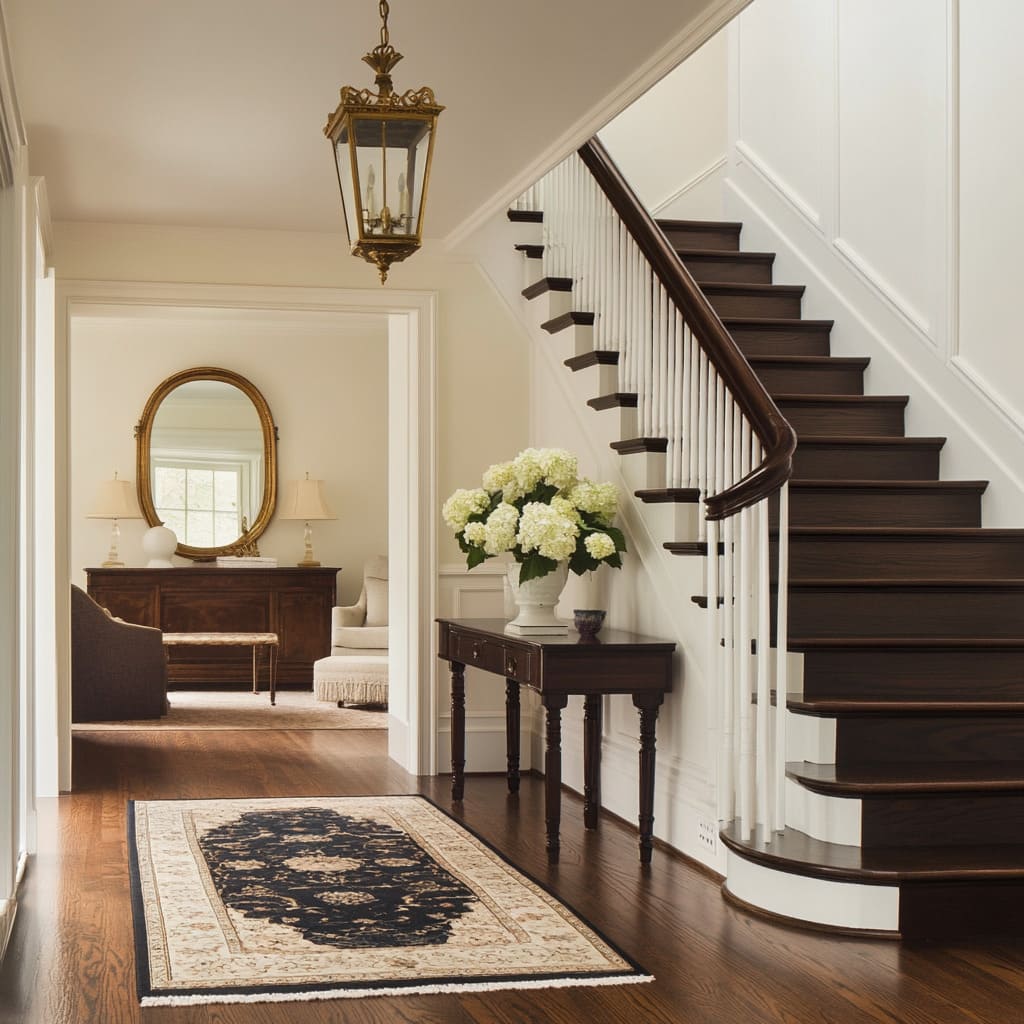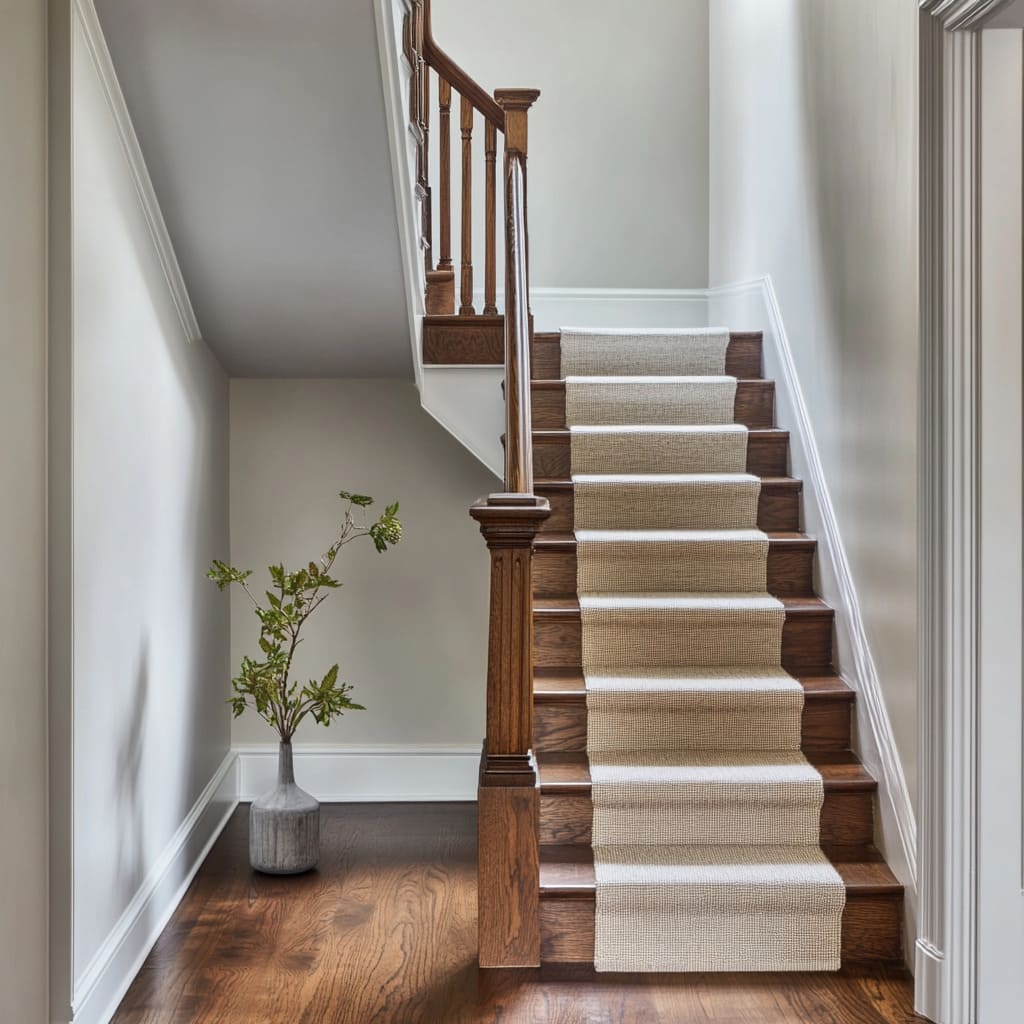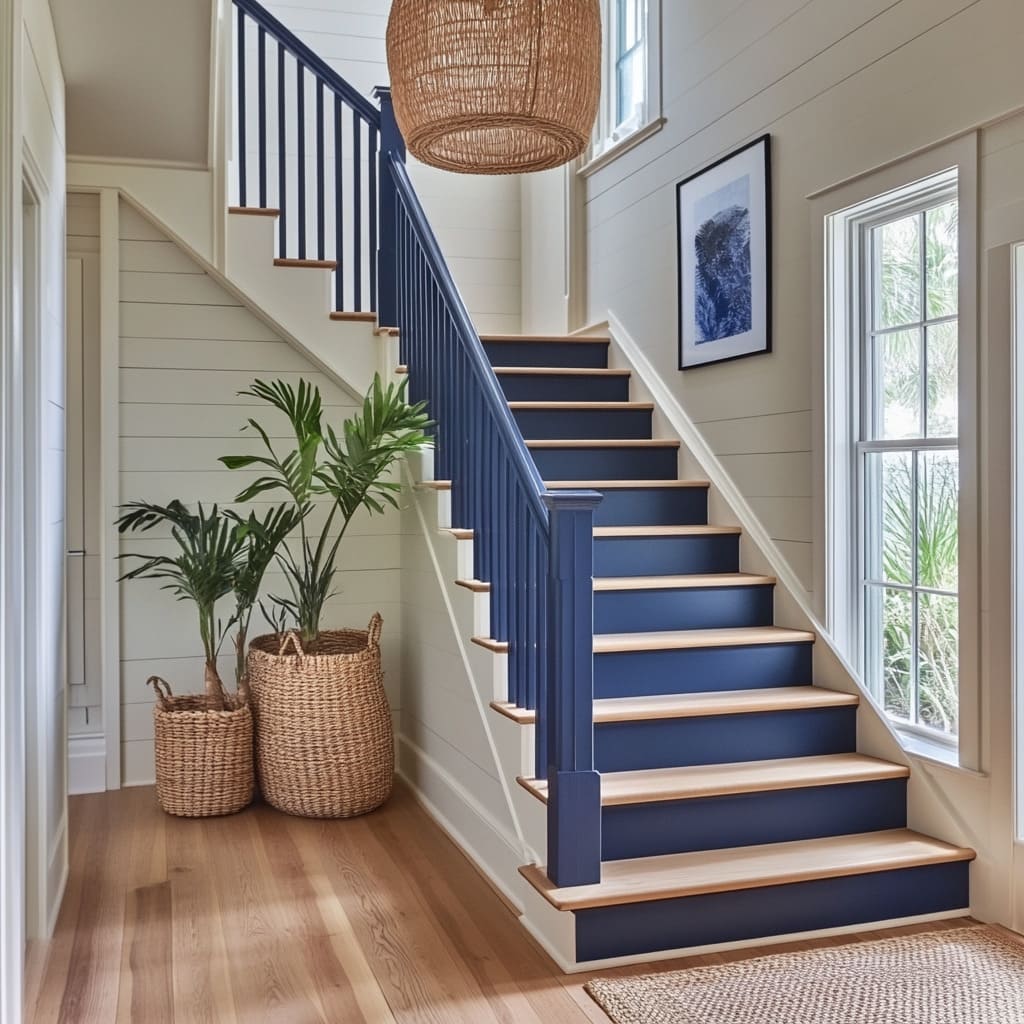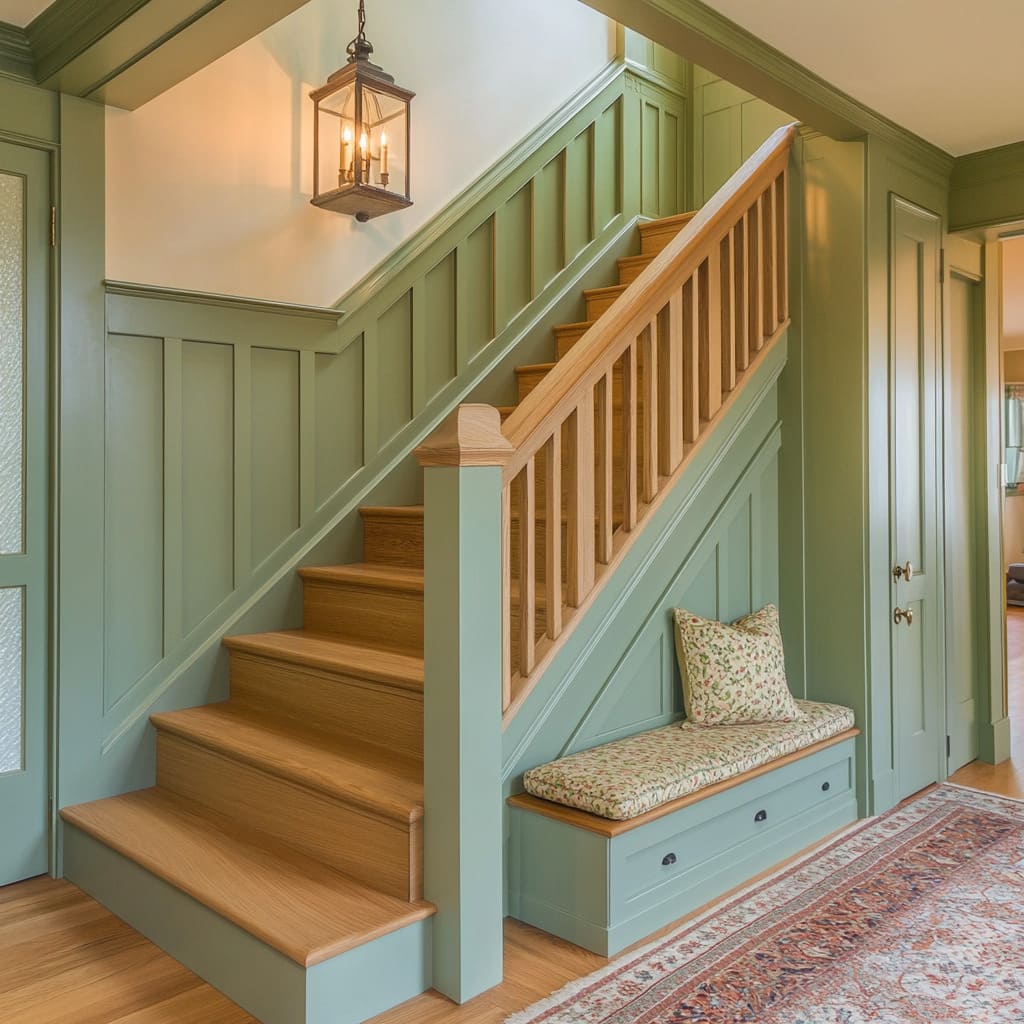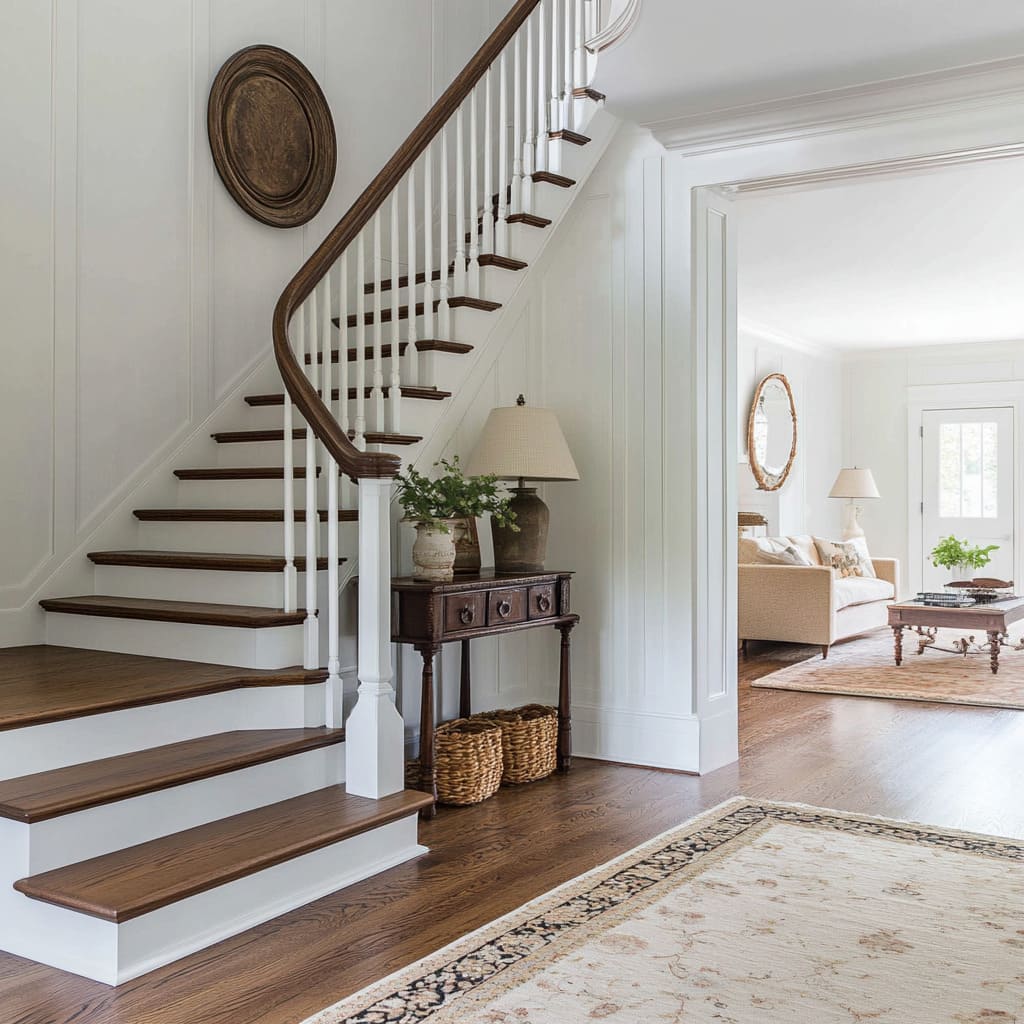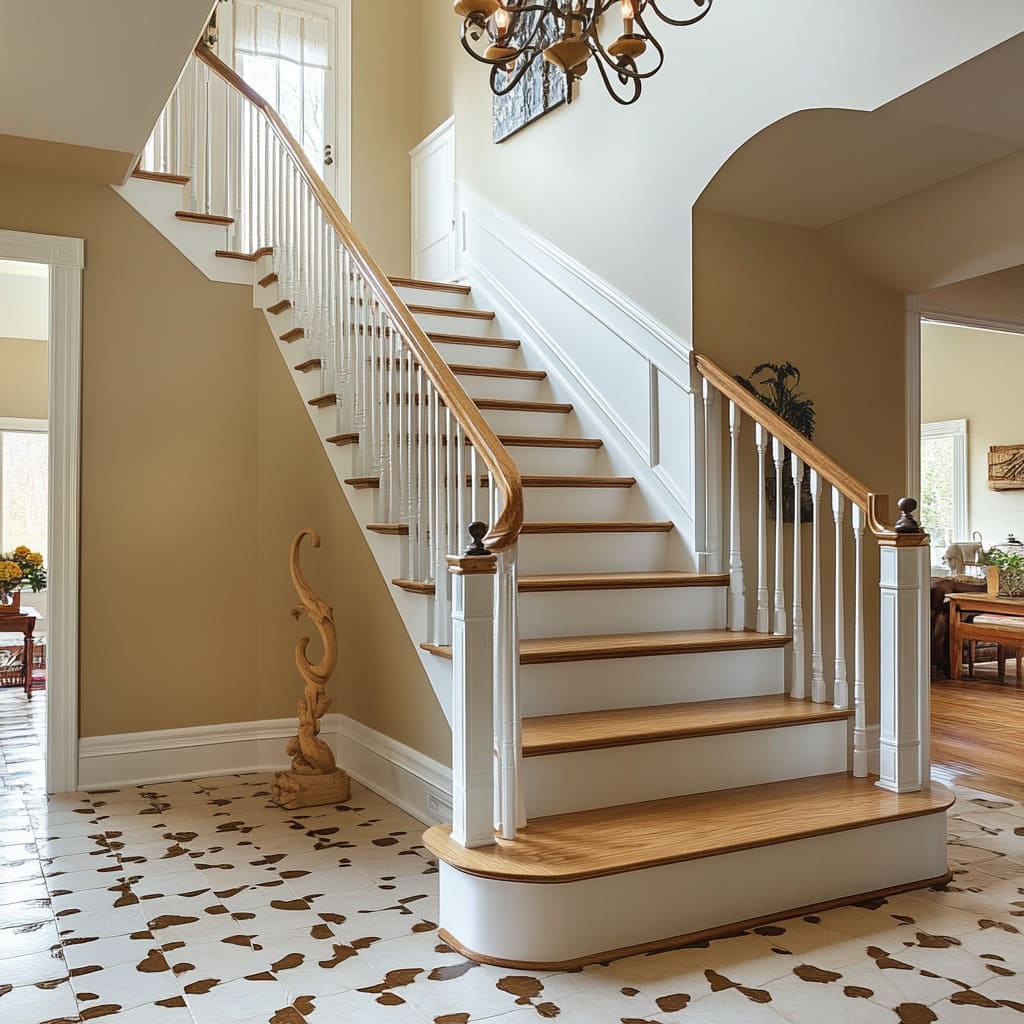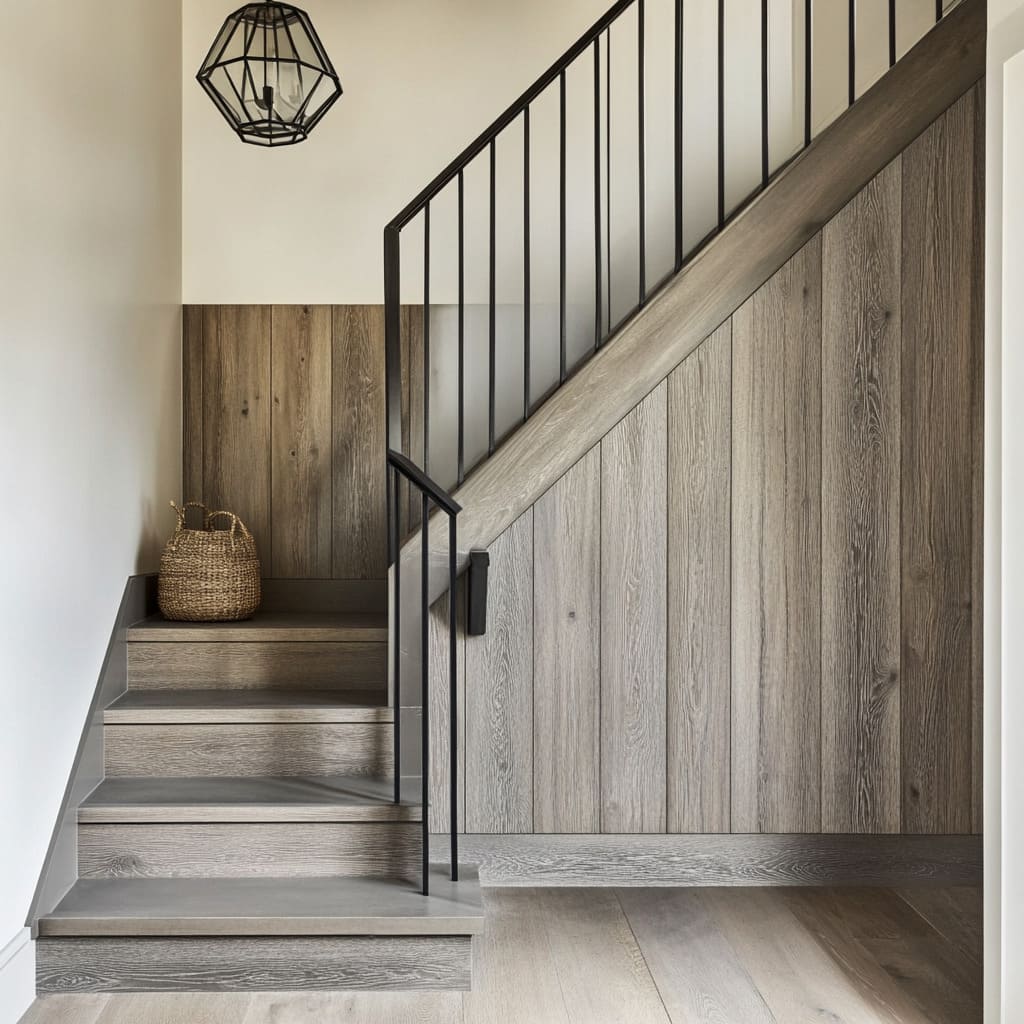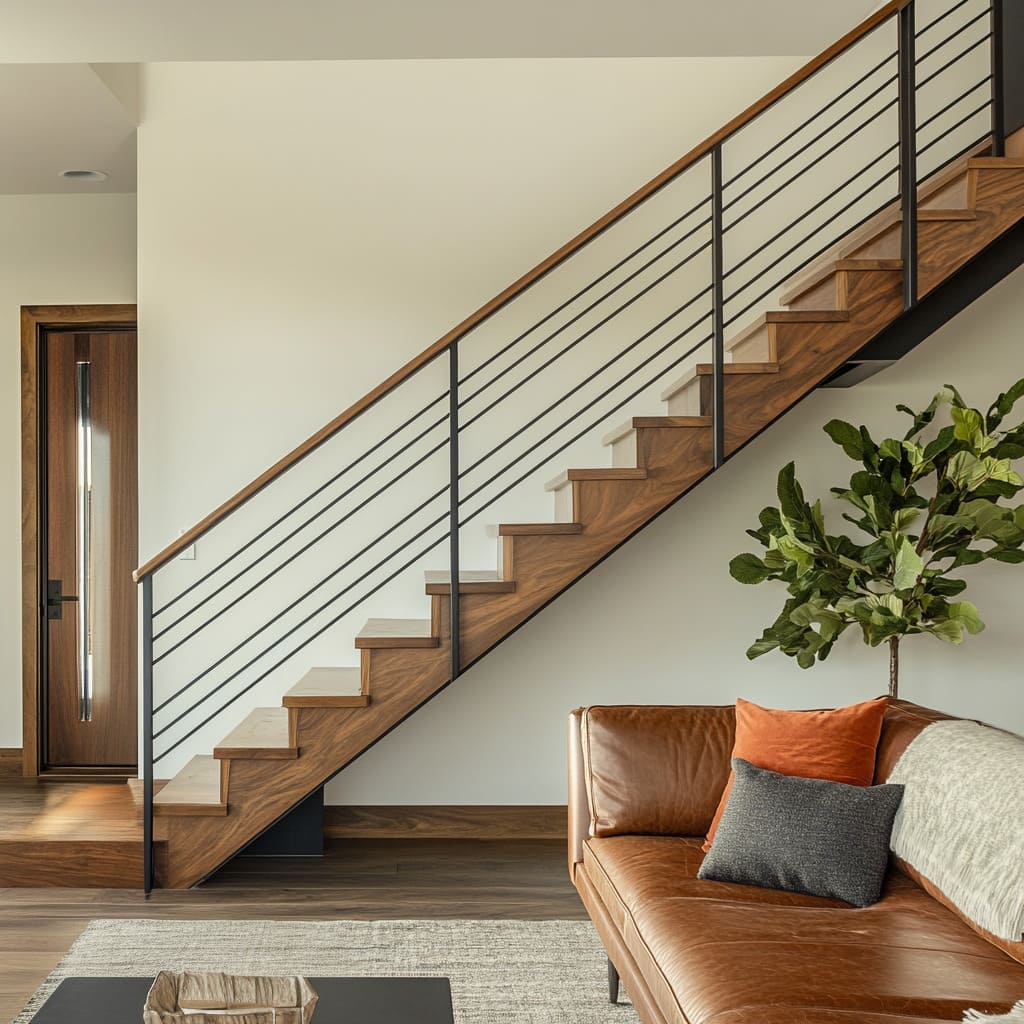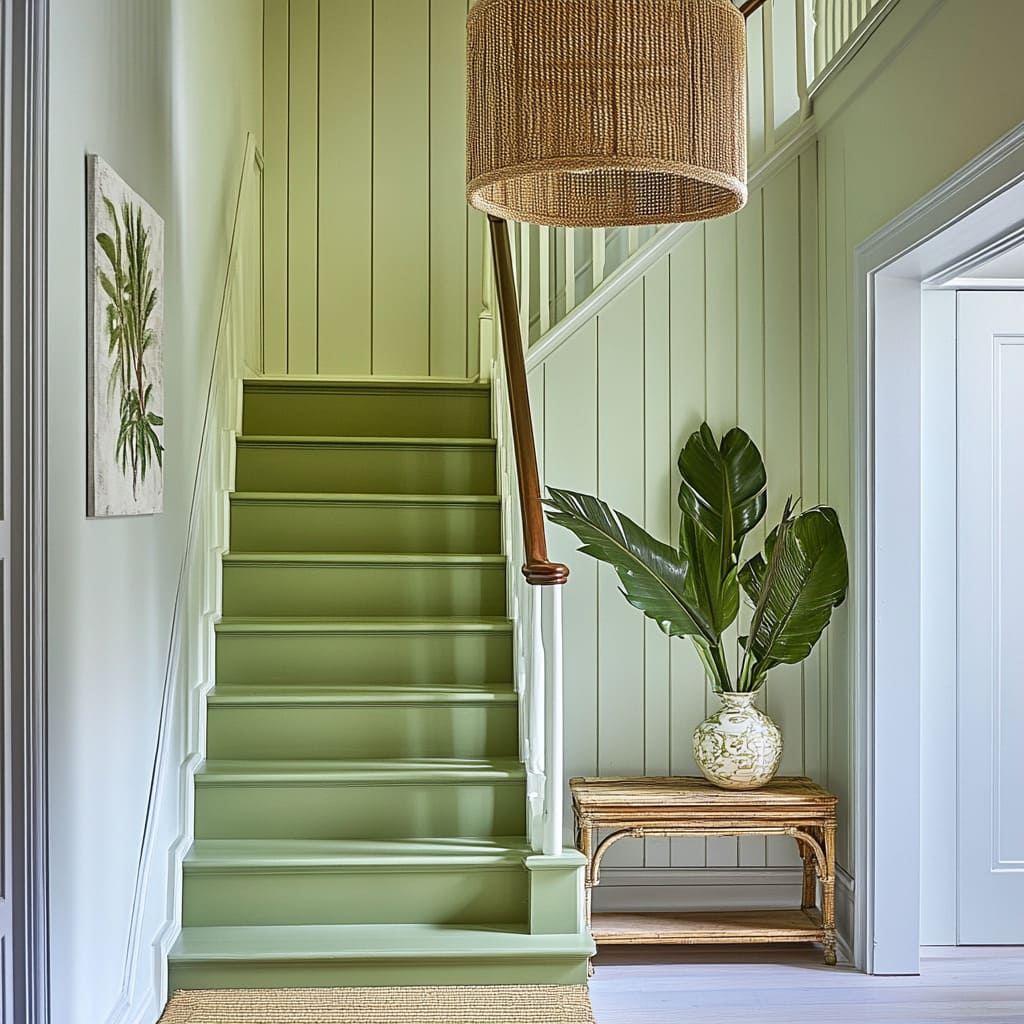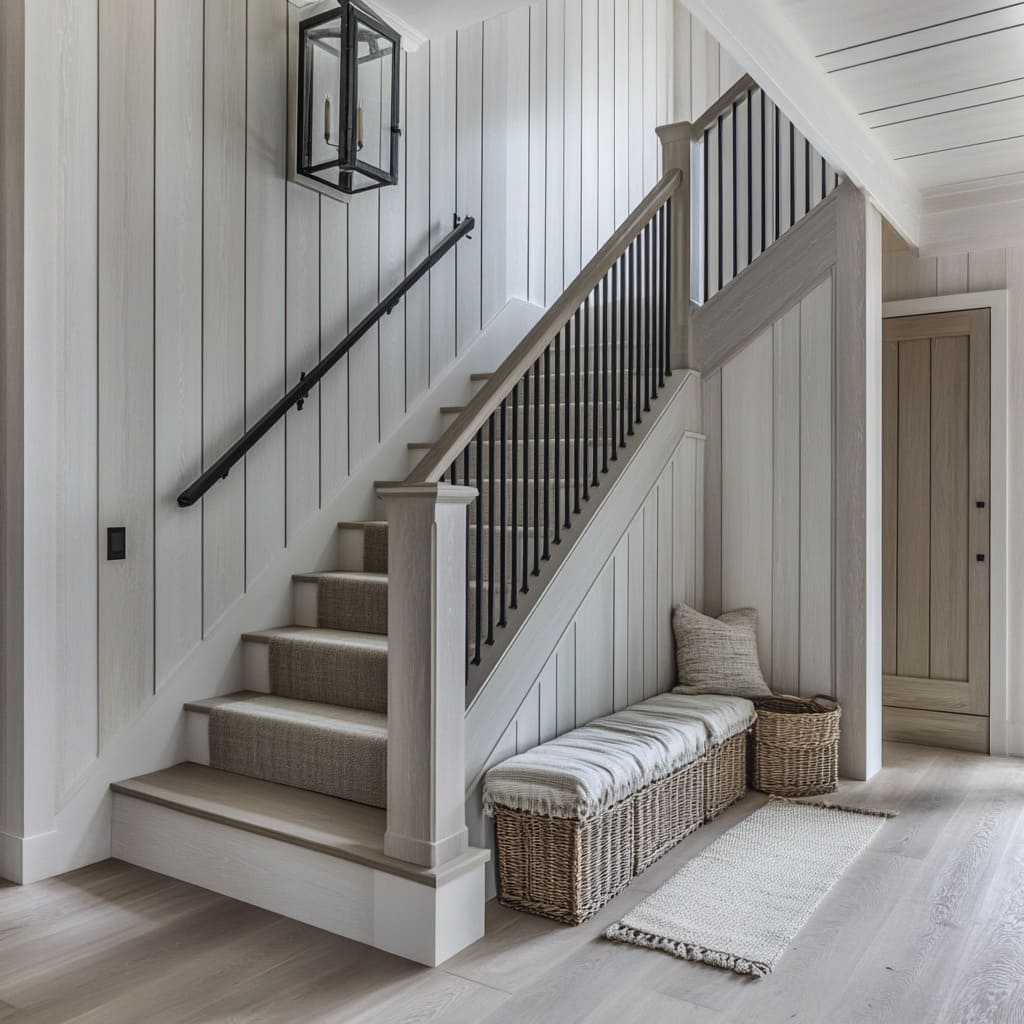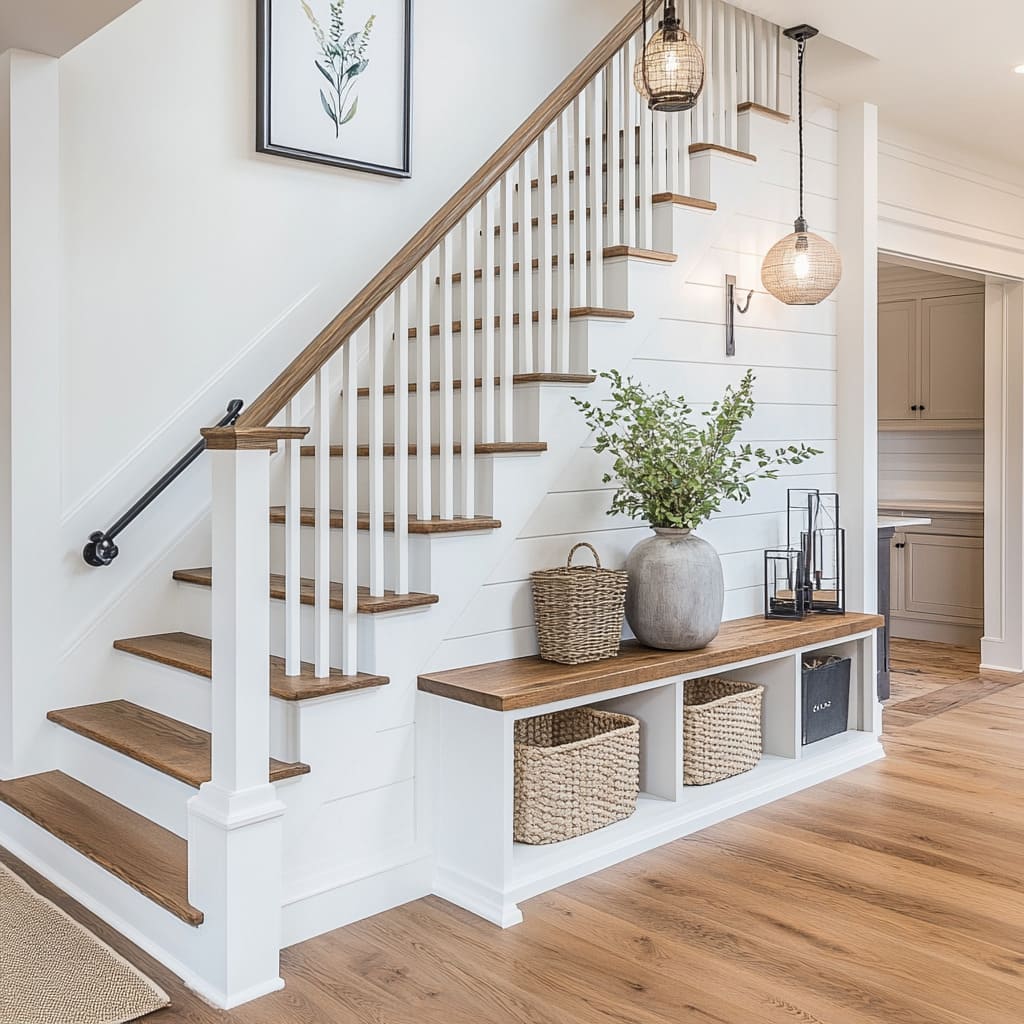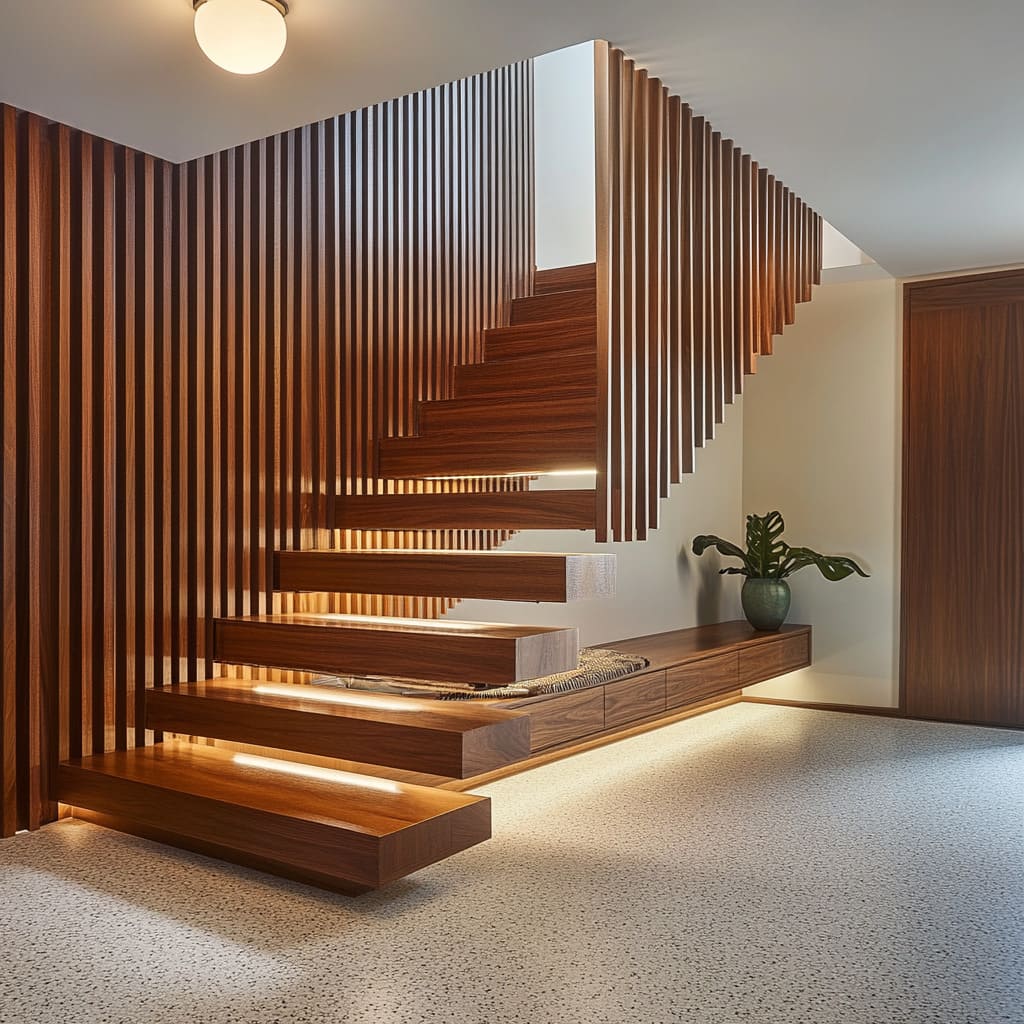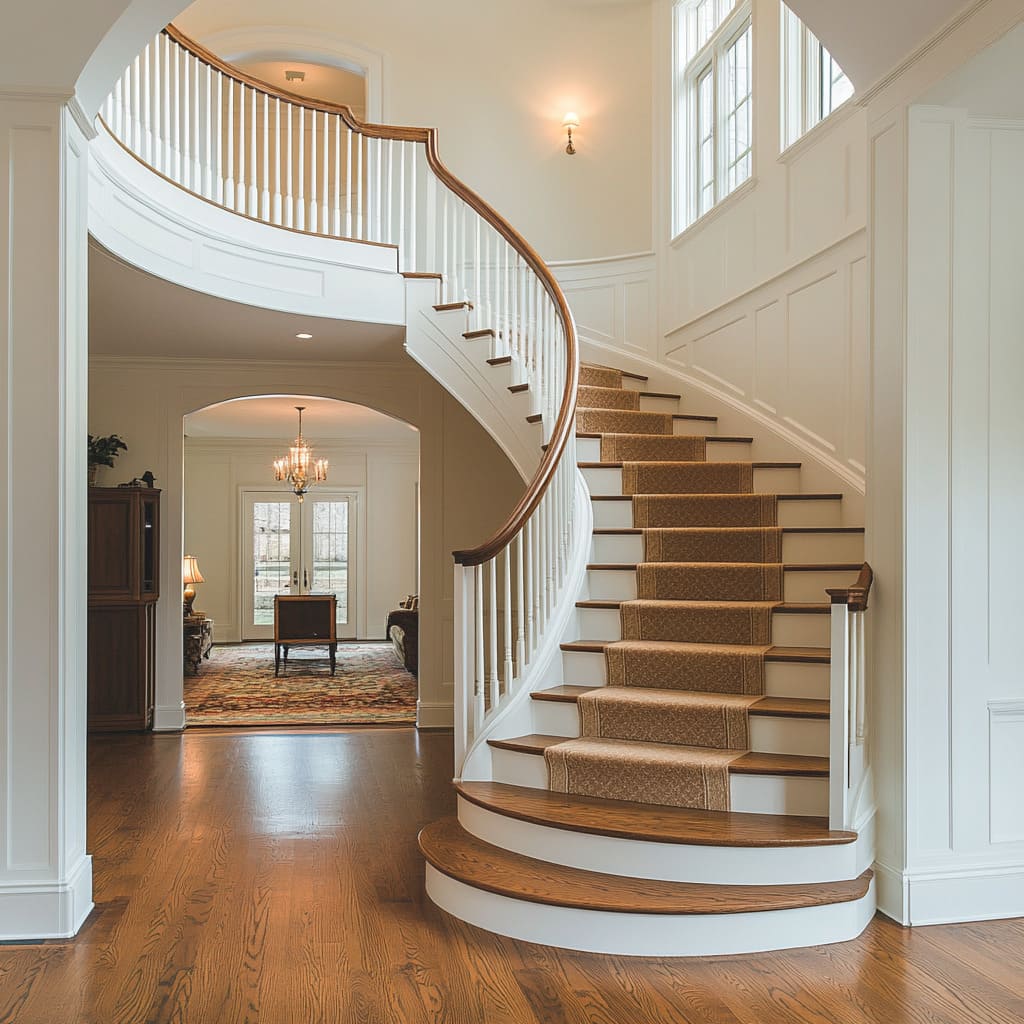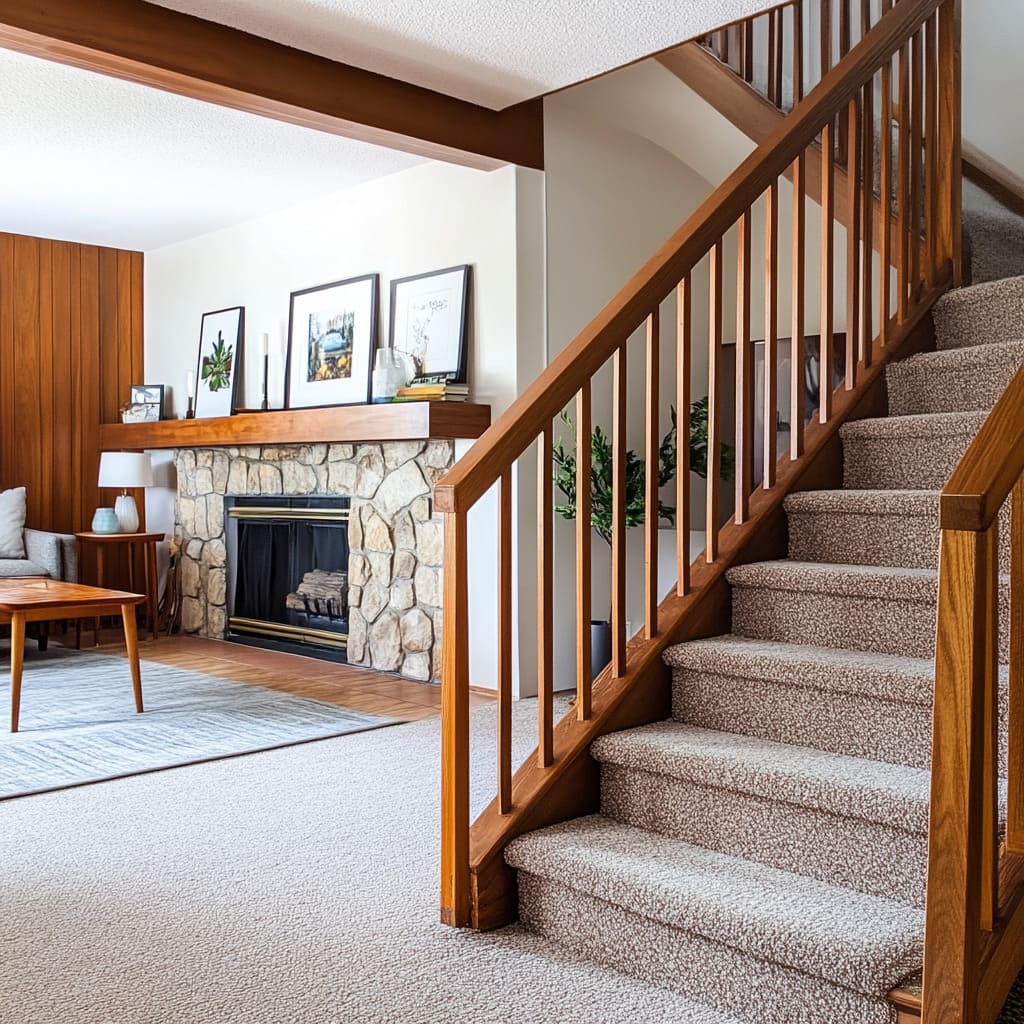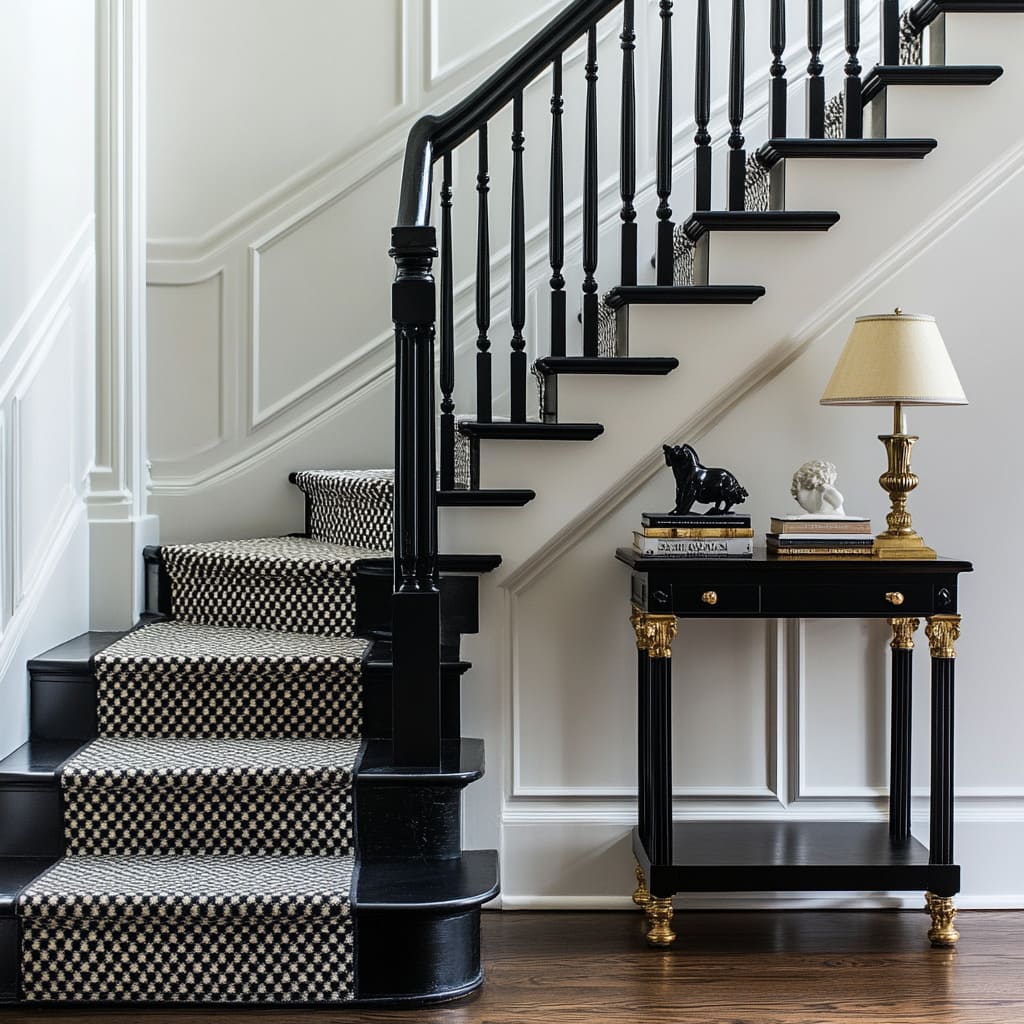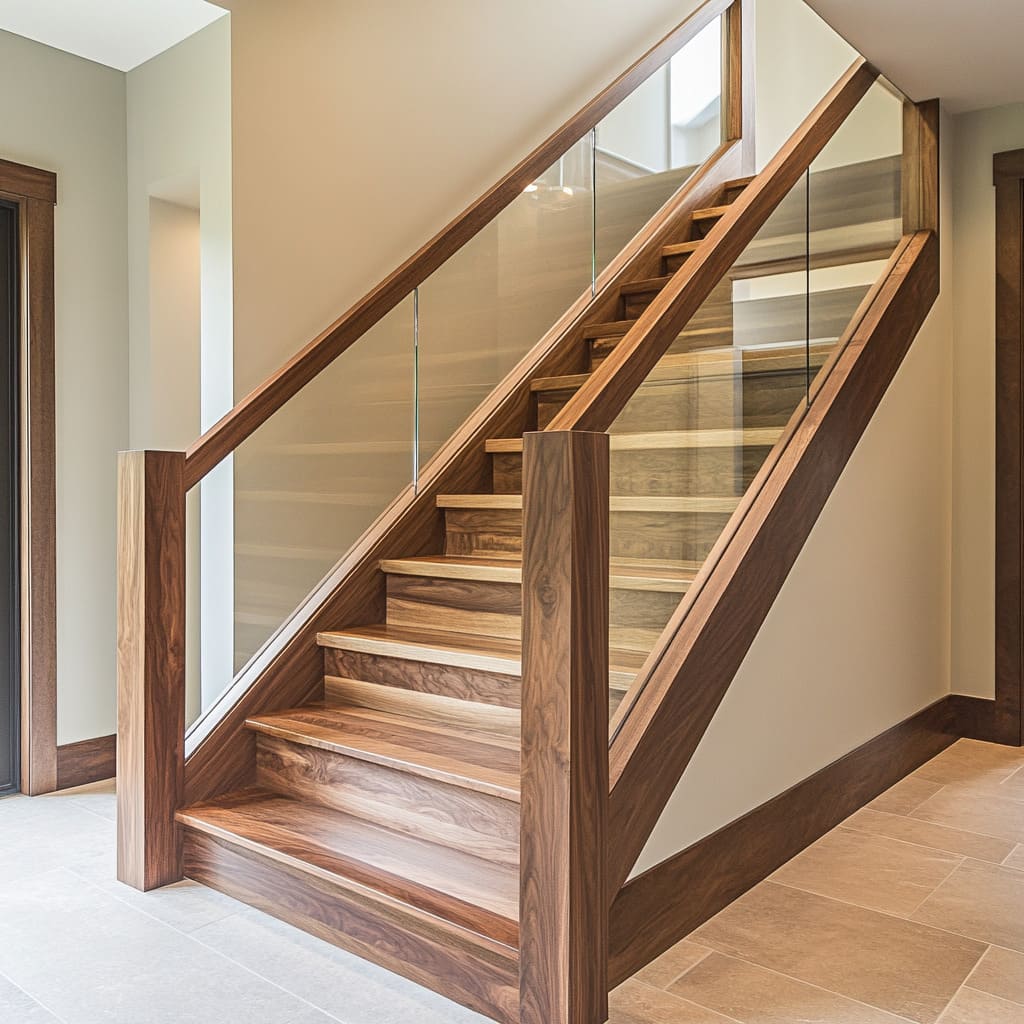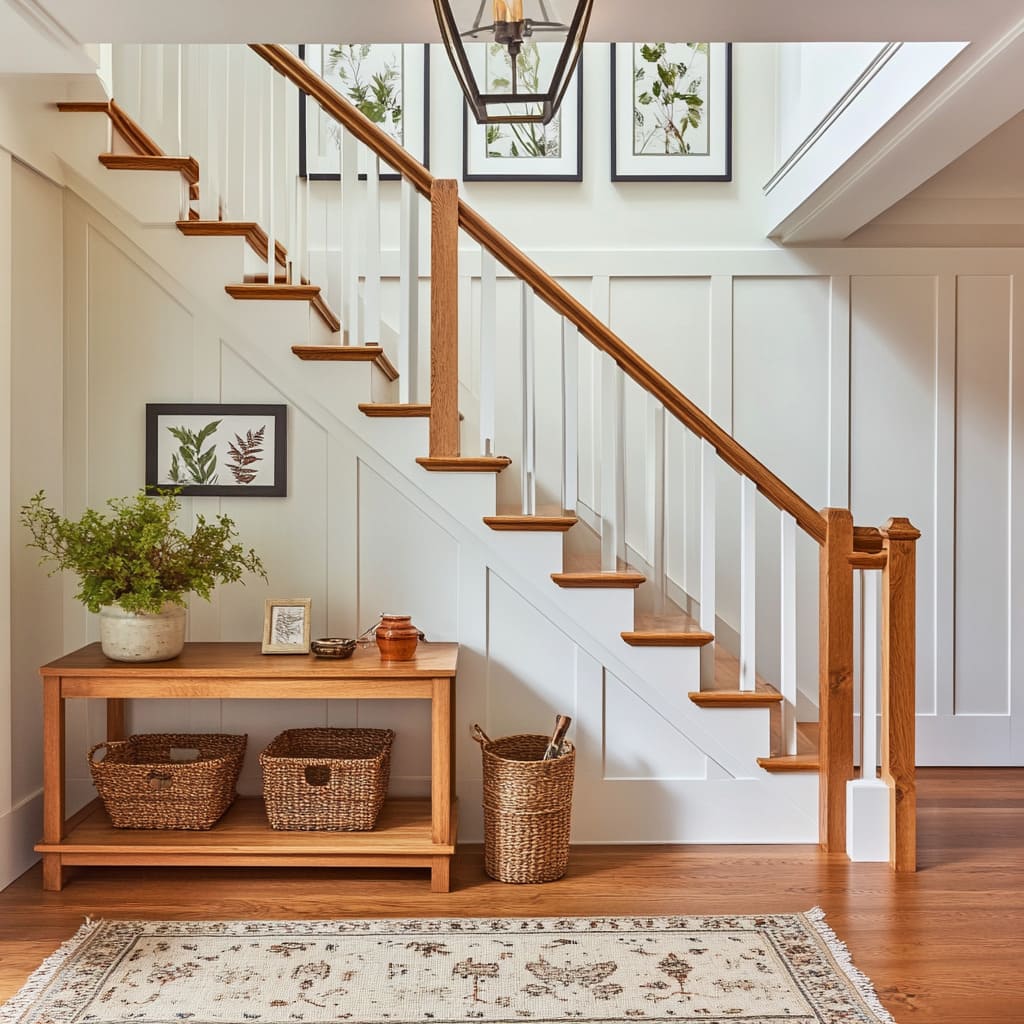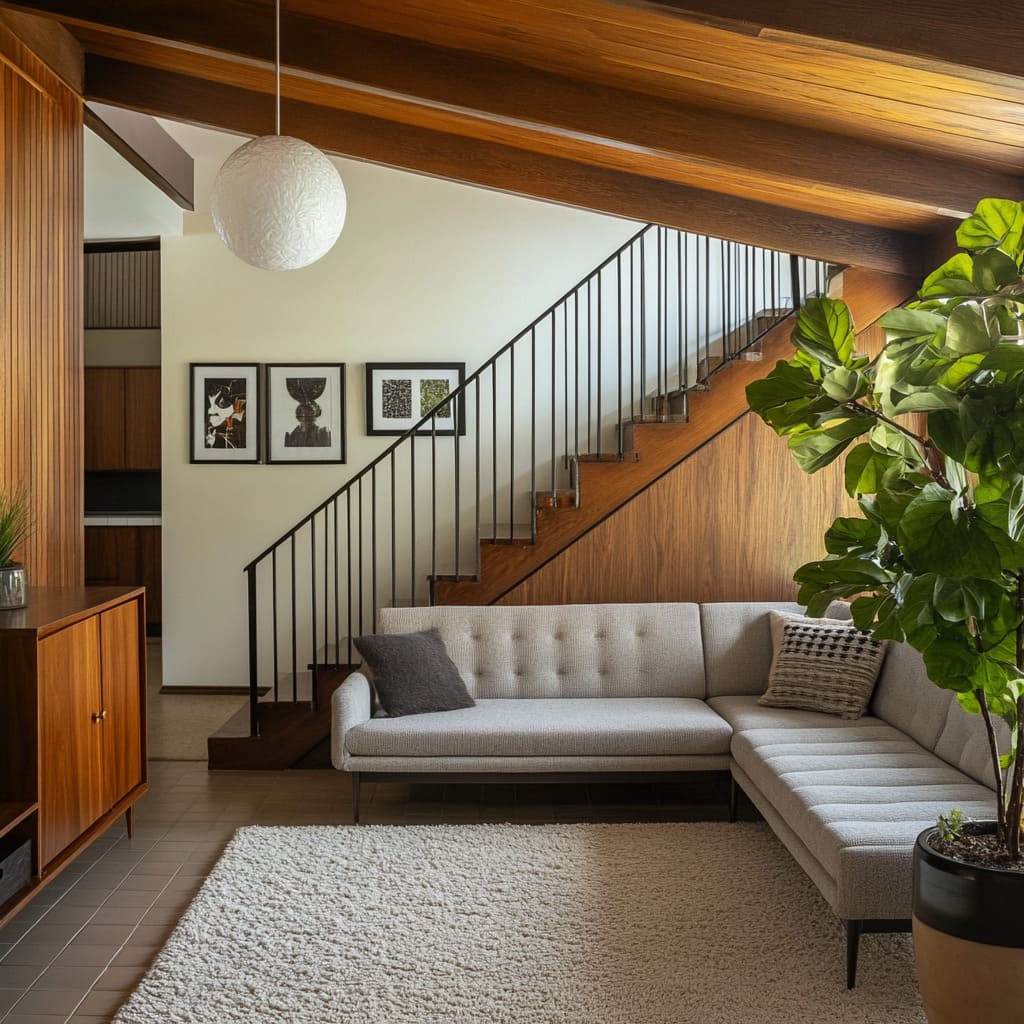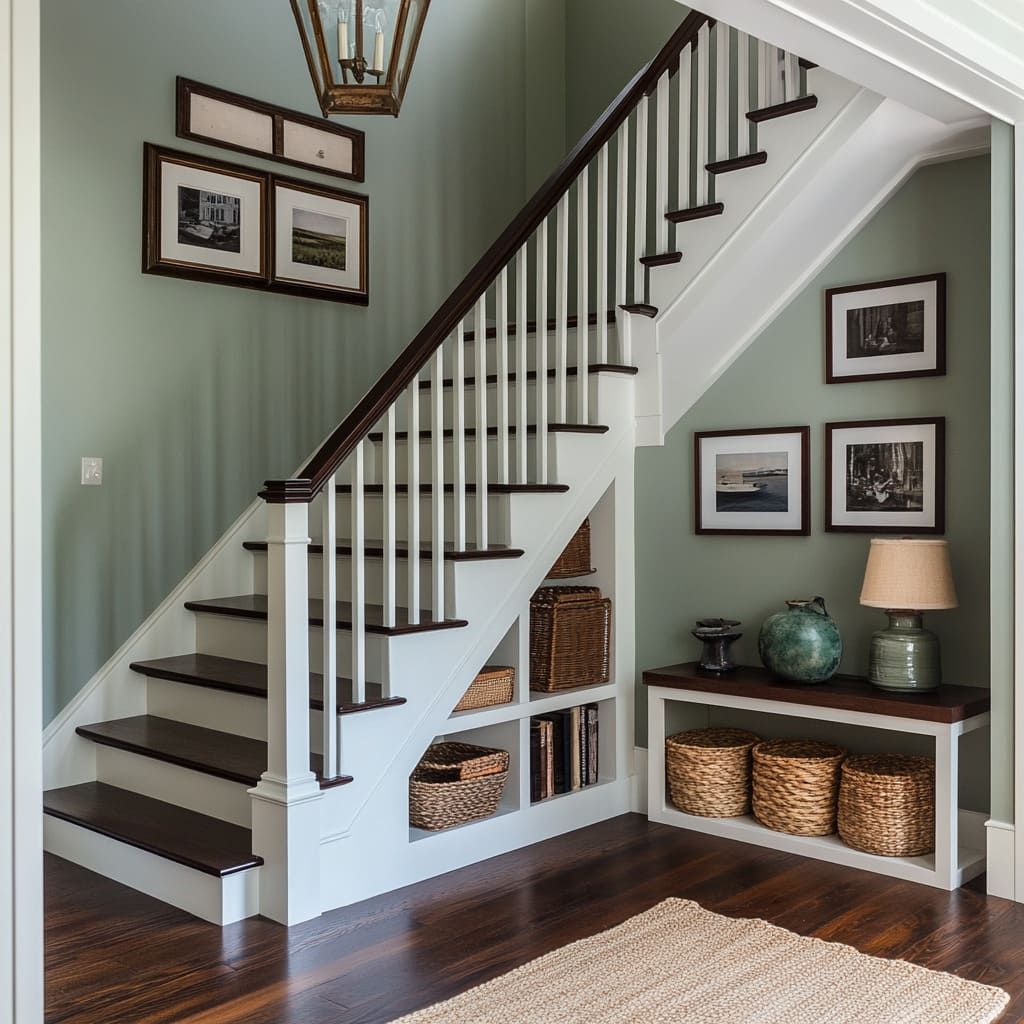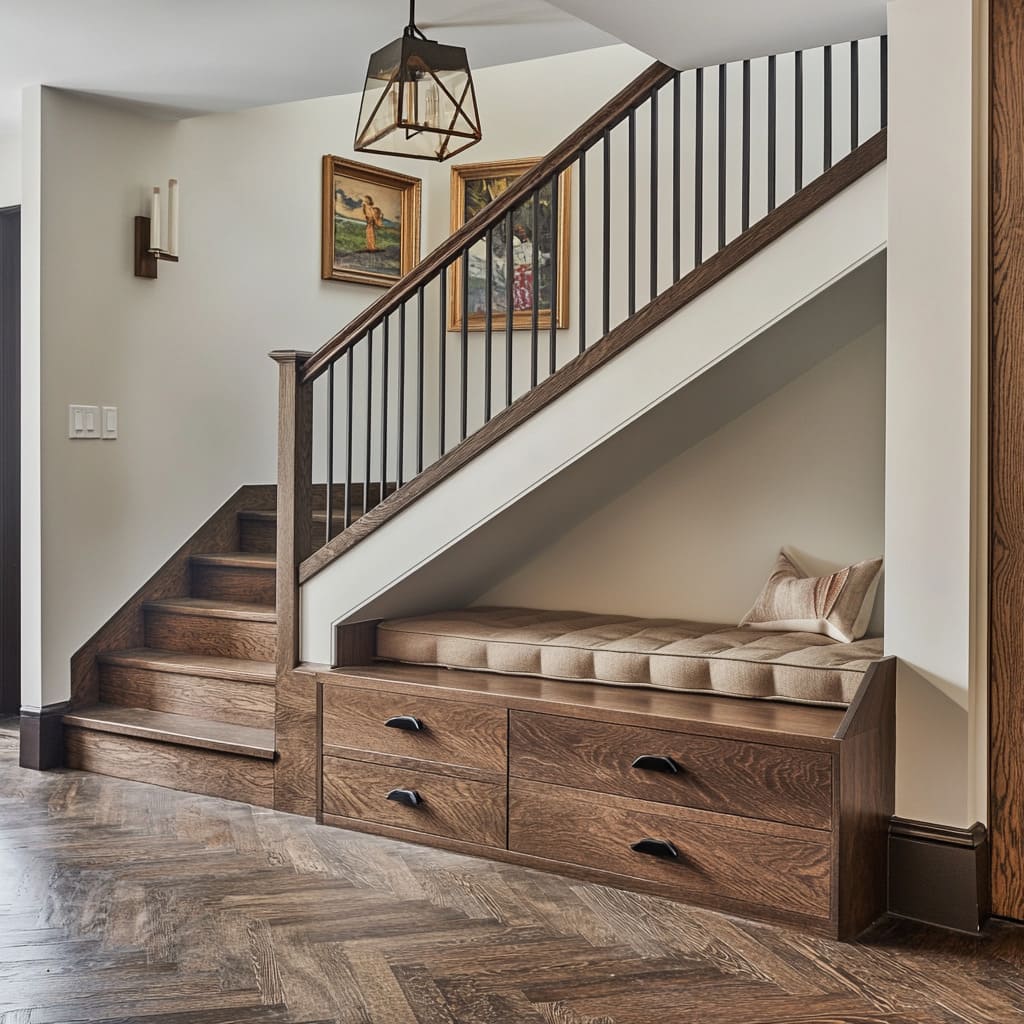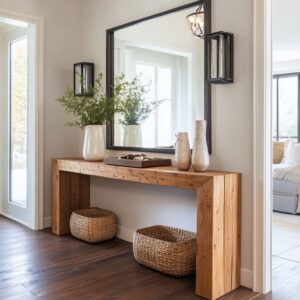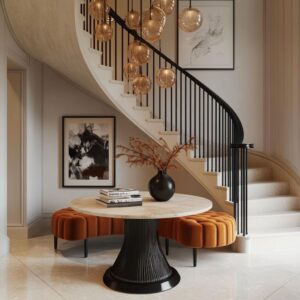A staircase is a defining part of a home’s style and structure. Whether subtle or bold, traditional or modern, the design of a staircase influences the feel of an entire space.
The right combination of materials, colors, and details can turn a simple set of steps into a feature that enhances both function and atmosphere. Wood remains a top choice for staircases, offering warmth, durability, and a timeless aesthetic.
But within that broad category, there are endless ways to customize the look. Some designs focus on clean, simple lines, while others emphasize craftsmanship with detailed balusters, contrasting treads, or decorative newel posts.
Even small changes, like selecting a different stain or adding a runner, can completely shift the personality of a staircase. Beyond appearance, thoughtful design choices can improve practicality.
Under-stair storage, integrated lighting, and carefully chosen railing styles all contribute to a staircase that works better for daily life. Whether you’re planning a full remodel or just looking for subtle upgrades, exploring different wooden stairs ideas can provide inspiration for creating a staircase that fits your home perfectly.
How Wall Treatments Can Change the Look of Your Staircase
Most people focus on treads, railings, and balusters when planning a wooden stairs design, but the walls surrounding a staircase can have just as much impact. The right paneling or wall treatment can completely change how the space feels—making it appear taller, wider, or more visually connected to the rest of the home.
A common trick in many well-designed staircases is the use of vertical paneling, such as board-and-batten or shiplap. This technique subtly draws the eye upward, making a stairwell feel taller than it actually is.
This works especially well in homes where the staircase is tucked into a narrow hallway or leads to a low-ceilinged landing. The vertical lines create an illusion of height, helping the space feel more open and airy.
On the other hand, horizontal paneling can have the opposite effect—visually expanding a stairwell that might feel too confined. If your staircase is squeezed into a tight space, running shiplap or wooden slats horizontally can create a sense of width, tricking the eye into perceiving a broader area.
This approach is often seen in coastal or farmhouse-style homes, but it can work in modern spaces too, especially when combined with neutral colors and minimalistic railings.
For those who want to introduce texture without paneling, consider wainscoting or half-wall molding. These elements add depth and character without overwhelming the space.
A well-placed chair rail or raised paneling can frame the staircase, giving it more structure while maintaining an open feel. Even simple paint choices can mimic the effects of architectural elements.
Painting the lower half of the staircase wall in a slightly darker shade than the upper half creates a visual base, grounding the staircase while making the ceiling appear higher. If you prefer a seamless look, keeping the walls and stair risers the same color can create a smooth transition, especially in contemporary homes.
Wall treatments don’t just serve a decorative function—they also help tie the staircase into the overall aesthetic of the home. A traditional Colonial-style home might look best with crisp white paneling, while a modern farmhouse could benefit from the warmth of natural wood slats.
The key is to match the wall treatment to the mood you want to create, whether it’s classic and refined or relaxed and inviting. The best part?
These upgrades don’t require major construction. A well-planned wall treatment can shift the entire feel of a staircase without the need for expensive structural changes.
Whether you’re working with a small entryway or a grand staircase, the right wall design can make all the difference.
How Mixing Wood Tones Enhances Staircase Design
One of the most effective yet often overlooked ways to make a staircase stand out is by combining multiple wood tones. Instead of using a single type of wood, mixing different species—such as walnut and white oak—adds depth, contrast, and a natural sense of movement to the design.
This technique is especially popular in modern interiors, where designers use it to highlight architectural details without adding unnecessary ornamentation. The secret behind this approach lies in how different woods interact with light.
Darker woods like walnut absorb more light, giving them a rich, deep appearance, while lighter species like white oak reflect light, making them feel airy and open. When these two are combined, the contrast draws attention to the structure itself.
A dark handrail against lighter treads, for example, makes the railing feel more sculptural, subtly framing the staircase in a way that a uniform finish cannot achieve.
Another factor to consider is wood grain. Some species have bold, dramatic patterns, while others are smoother and more understated.
If both woods have a busy grain, they might compete with each other, making the staircase feel visually cluttered. A well-balanced approach pairs a richly grained wood, like hickory or walnut, with a more subtle option, such as maple or white oak.
This allows each element to shine without overwhelming the overall design.
For homeowners wanting to replicate this idea, selecting the right finish is just as important as choosing the wood itself. A matte or satin finish enhances the natural grain without creating excessive glare, while a high-gloss varnish can make the contrast feel too stark.
Keeping both wood types in a similar finish level helps maintain a cohesive look. This method is particularly effective in a contemporary wood staircase, where clean lines and minimal detailing are key design elements.
By strategically combining wood tones, a simple staircase can become a striking architectural feature, proving that contrast doesn’t always have to come from paint or metal. Instead, the materials themselves do the work, adding interest while staying true to the organic beauty of wood.
For those working with existing stairs, it’s possible to introduce this contrast without rebuilding the entire structure. Refinishing the handrail in a darker stain while keeping the treads in a natural tone is an easy way to apply this concept.
Another option is replacing the stair nosing with a contrasting wood, subtly defining the edges of each step. Mixed-wood staircases fit well in a variety of styles, from mid-century modern to farmhouse and even transitional spaces.
The key is balance—whether it’s a subtle variation between warm and cool wood tones or a bold contrast between light and dark, the right combination makes an everyday feature of the home feel intentionally designed.
Why Thoughtful Staircase Lighting Makes a Big Difference
Lighting is one of the most effective ways to enhance the look and functionality of a staircase, yet it’s often treated as an afterthought. A well-lit staircase does more than provide visibility—it creates depth, highlights architectural details, and transforms a simple structure into a striking focal point.
Whether you’re designing a modern wooden staircase or updating an existing one, integrating lighting properly from the start ensures a seamless result.
One of the most popular lighting techniques is embedding LED strips beneath floating treads. This not only adds a soft glow that makes each step appear to hover, but it also improves safety by subtly illuminating each level change.
In homes with open staircases, where the structure is visible from multiple angles, this type of lighting enhances the overall composition, turning the stairs into a key visual element rather than just a functional transition between floors.
Another approach is incorporating recessed lighting along the handrail. Small, built-in LEDs create a gentle wash of light that runs the length of the staircase, providing guidance without overwhelming the space with harsh overhead fixtures.
This technique works particularly well in homes that favor a minimalist look, where lighting should feel integrated rather than separate from the overall design. For those wanting to highlight the textures of wood or stone, wall-mounted step lights are a great option.
These lights, placed low along the wall beside the staircase, cast a soft glow over the treads, emphasizing the grain of the wood and any material variations. They also create interesting shadow patterns, adding a layer of visual depth to the space.
Planning lighting in advance is key. Since LED strips and recessed fixtures require hidden wiring, it’s much easier to integrate them during the construction phase rather than trying to retrofit them later.
If the staircase is already in place, battery-operated or low-voltage options can be installed with minimal disruption. However, for a polished, high-end look, pre-wiring the space for built-in lighting is the best approach.
Another factor to consider is color temperature. Warm white lighting (2700K–3000K) enhances the natural warmth of wood and creates a cozy atmosphere, making it ideal for staircases in homes with a softer, traditional aesthetic.
Cooler white tones (3500K–4000K) emphasize clean lines and modern design, giving a more architectural feel. Choosing the right lighting temperature ensures the staircase complements the overall style of the home.
For homes with high ceilings or open landings, pendant lights or chandeliers placed near the staircase can further elevate the look. A statement light fixture at the top of a staircase not only provides illumination but also serves as an anchor point, drawing the eye upward and adding balance to the space.
Whether subtle or dramatic, lighting plays a crucial role in how a staircase is perceived. When planned carefully, it enhances both safety and aesthetics, making the staircase feel like a designed feature rather than just a necessity.
If you’re designing a staircase from scratch or planning an upgrade, taking the time to incorporate thoughtful lighting solutions can turn an ordinary set of stairs into a standout architectural element.
Smart Storage Solutions That Blend Seamlessly into Staircase Design
The space beneath a staircase is one of the most underutilized areas in many homes, yet with thoughtful planning, it can serve as a highly functional storage solution that blends seamlessly into the overall design. Instead of treating this space as an afterthought, integrating storage from the start ensures it looks intentional and enhances the staircase rather than competing with it.
A well-designed timber staircase design can incorporate built-in storage that feels like a natural extension of the structure. Seating nooks with hidden drawers, open cubbies with woven bins, or even enclosed cabinets can transform an empty void into an efficient storage hub.
The key is to design the space with a purpose in mind—whether it’s for shoes, seasonal gear, or household essentials—so that every compartment serves a function.
For homes that require extra seating, a built-in bench under the staircase is a practical option. When combined with deep pull-out drawers, it becomes an ideal spot for stowing away items that aren’t used daily but still need to be accessible.
This approach works particularly well in entryways, where additional seating is often needed for putting on shoes or setting down bags. If keeping items visible and easy to grab is a priority, open shelving with decorative storage baskets offers both practicality and a visually appealing solution.
Wicker or fabric bins can soften the look of the staircase while making it easy to organize everything from kids’ toys to pet supplies. The advantage of open cubbies is their adaptability—bins can be swapped out or rearranged as storage needs change.
For a more discreet approach, custom-built cabinetry beneath the staircase provides a seamless look while maximizing available space. A series of panel doors can blend into the staircase design, creating a sleek, uniform appearance that hides clutter.
This is particularly useful for storing seasonal decorations, extra linens, or even a small wine collection. Some homeowners take under-stair storage to the next level by incorporating multi-functional elements, such as a compact workspace or a reading nook.
A small desk tucked beneath the staircase can create a cozy home office setup, while a built-in reading alcove with plush cushions can transform an overlooked space into a relaxing retreat.
No matter which approach is chosen, the key to successful staircase storage is customization. Taking measurements to ensure every shelf, drawer, or cabinet is sized for its intended purpose makes the space more efficient.
Thoughtful material selection—matching the wood finish of the staircase, using hardware that complements the home’s style, and choosing durable surfaces—ensures that the storage doesn’t look like an add-on but instead feels like a cohesive part of the home’s architecture.
A well-planned under-stair storage system can do more than just provide extra space—it can add character, functionality, and visual interest to a home while making the most of every square foot. Whether it’s open shelving, hidden drawers, or a built-in seating area, the right design can turn an overlooked corner into one of the most useful spaces in the house.
Textiles on Stairs: More Than Just a Decorative Choice
Adding textiles to a staircase goes far beyond aesthetics—it plays a crucial role in noise control, safety, and long-term durability. Whether opting for a fully carpeted look or a structured runner, the right material can significantly impact the way a modern wooden staircase functions in everyday life.
One of the biggest advantages of incorporating textiles is noise absorption. Hard surfaces like wood tend to amplify sound, especially in multi-level homes where footsteps can echo throughout the space.
A fully wrapped carpet covering each tread minimizes this issue by softening footfalls and reducing the sound transfer between floors. This feature is especially beneficial in homes with children or those with an open floor plan where noise travels easily.
For homeowners who prefer the look of exposed wood while still wanting some noise dampening, a stair runner offers a balanced solution. Runners cover only the central portion of the steps, leaving the edges visible for a more structured appearance.
The key to ensuring a runner stays securely in place is proper installation—without the right underlayment or attachment method, shifting can occur over time, leading to uneven wear or even safety hazards.
Durability is another major factor in choosing stair textiles. High-traffic areas like staircases require materials that can withstand constant use without showing wear too quickly.
Wool is a popular option due to its natural resilience, while synthetic blends provide cost-effective alternatives that resist flattening. Testing fabric thickness before installation can prevent the common mistake of selecting a material that looks great initially but compacts under heavy foot traffic within months.
Beyond function, textiles also contribute to the overall design theme of a staircase. A patterned runner can introduce color and texture, complementing other architectural details in the home.
A solid neutral carpet, on the other hand, keeps the look understated while adding warmth to a space dominated by wood and metal elements. For those leaning toward a contemporary style, a geometric or textured weave can provide subtle visual interest without overpowering the design.
Safety is another often overlooked benefit of stair textiles. Smooth wood steps can be slippery, particularly in homes with elderly residents or small children.
A well-fitted carpet or runner improves grip, reducing the risk of slips and falls. This makes it a practical choice for families who want to prioritize both style and functionality.
Proper maintenance ensures that stair textiles stay in top condition over time. Vacuuming regularly helps prevent dirt from embedding in the fibers, while choosing stain-resistant materials can make cleaning up spills much easier.
If selecting a runner, ensuring it is firmly secured with stair rods or adhesive backing prevents shifting and prolongs its lifespan. Ultimately, adding textiles to a staircase is a choice that enhances both form and function.
Whether aiming for a plush, fully carpeted look or a refined runner that adds definition to each step, selecting the right material and installation method ensures lasting comfort, reduced noise, and a cohesive design that ties into the rest of the home.
How Baluster and Newel Post Choices Shape Staircase Style
The finer details of a staircase, such as baluster design and newel post shape, can drastically alter the entire look and feel of a space. These structural elements may seem secondary to larger features like treads and risers, but they hold the power to define whether a staircase leans toward traditional, contemporary, or even industrial aesthetics.
Balusters, also known as spindles, contribute to the visual rhythm of a staircase. Their shape determines whether the staircase appears ornate, minimalist, or somewhere in between.
A softly turned baluster, with gentle curves and detailing, suits homes with a cottage, farmhouse, or classic colonial feel. This style pairs well with warm wood tones and traditional moldings, reinforcing a timeless charm.
On the other hand, straight rectangular balusters, often seen in black metal or painted wood, create a streamlined effect that feels more contemporary. This design choice works well in modern loft-style spaces or homes that embrace a clean, structured look.
Newel posts, which anchor the staircase at key transition points, also contribute to the overall impression. A thick square post with chamfered edges lends itself to craftsman-style homes, while a slender, intricately carved post reflects a Victorian influence.
Even the material of the newel post matters—stained wood brings warmth, while a painted finish aligns with a more polished, classic aesthetic.
For homeowners looking to update an older staircase without a complete overhaul, changing the balusters and refinishing the handrail is one of the simplest yet most effective transformations. Replacing dated turned balusters with sleek, square designs instantly modernizes the look.
Conversely, adding more detailed balusters to a plain staircase can introduce character and historical charm. The material combination also plays a role in defining style.
A staircase with wooden balusters and a contrasting metal handrail leans industrial, while an all-wood approach remains more traditional. Some wooden staircase design ideas integrate a blend of materials to strike a balance—such as metal balusters paired with a thick wooden handrail for a refined yet modern touch.
Color and finish are equally important. A deep espresso-stained handrail paired with crisp white balusters creates a striking contrast that fits well in transitional interiors.
Lighter wood tones with matching balusters offer a softer, Scandinavian-influenced aesthetic. For those seeking a bold statement, opting for black balusters against a white staircase adds depth and structure, making the staircase a focal point in an open space.
Ultimately, balusters and newel posts act as the fine details that pull together the entire staircase design. Whether leaning toward a rustic farmhouse feel, a sleek contemporary style, or a traditional colonial look, adjusting these small components allows for a significant stylistic shift.
For those refurbishing an American home, focusing on these elements can achieve a refreshed aesthetic without the need for extensive reconstruction.
Bringing Warmth to Staircases with Plants and Natural Elements
Wood and metal staircases create a strong architectural presence, but without softer elements, they can sometimes feel too rigid or sterile. That’s where plants, natural textures, and organic materials come in.
Many wooden staircase designs for homes include intentional touches of greenery or woven materials to balance out the structured lines. These additions are not just for decoration—they influence how the staircase connects to the rest of the home.
One of the simplest ways to introduce softness is by placing a planter box beneath a floating staircase. This is a popular choice in contemporary spaces where open risers allow visibility through the structure.
A carefully arranged planter at the base grounds the staircase visually while subtly connecting the different levels of the home. Large-leaf plants, such as fiddle-leaf figs or monstera, work particularly well in this setup because their broad shapes contrast with the linear precision of the treads and balusters.
For staircases with a more traditional layout, a strategically placed vase or potted plant near the newel post can serve as an elegant transition piece. This is especially effective in entryways where the staircase is one of the first features seen upon entering.
A tall ceramic planter with lush greenery can draw the eye upward, emphasizing the height of the stairwell without overpowering the space.
Another approach is integrating greenery directly into the stairwell wall or railing design. Some homeowners incorporate recessed plant shelves along the staircase wall, creating built-in alcoves that hold decorative pots or trailing vines.
This method works particularly well in homes that embrace a nature-inspired aesthetic, as it reinforces a connection to organic materials. For those wanting to bring greenery into a staircase area but dealing with limited natural light, the right plant selection is key.
Low-maintenance options like snake plants, ZZ plants, or pothos thrive in lower-light environments and require minimal upkeep. If the stairwell is particularly dark, high-quality artificial plants can also achieve a similar effect without the need for sunlight or watering.
Beyond plants, other natural materials can add warmth to a staircase setting. Woven baskets, rattan furniture pieces, or textured rugs placed near the base of the stairs introduce subtle organic contrast.
Even small details, such as a wooden bench with a linen cushion tucked beneath the steps, can help soften the structured elements of the staircase. These natural additions do more than just fill empty space—they transform a staircase from a structural feature into an inviting part of the home.
Whether through greenery, woven textures, or subtle organic details, these elements ensure that a staircase feels like an integrated part of the overall living space rather than a purely functional transition between floors.
Conclusion
A staircase is far more than a functional element—it plays a central role in shaping the overall character of a home. Whether designed to be a statement feature or a subtle transition between levels, the right choices in materials, finishes, and structural details can make all the difference.
From the warmth of natural wood to the sleek lines of metal railings, every element contributes to the atmosphere of the space.
One of the key takeaways from the examples explored is the way small adjustments can have a major impact. The selection of wood tones, the introduction of lighting, or even the placement of a well-chosen runner can shift the perception of a staircase without requiring a full rebuild.
Thoughtful design choices don’t just enhance aesthetics—they influence comfort, acoustics, and how seamlessly the staircase blends into the surrounding interiors.
For homeowners considering updates, it helps to view a staircase as an opportunity rather than a constraint. Even in older homes, swapping balusters, refinishing handrails, or incorporating under-stair storage can completely refresh the space.
In contemporary designs, floating treads or glass railings introduce openness, while integrated lighting adds a polished touch that enhances both style and safety.
No matter the style—classic, modern, farmhouse, or industrial—the goal is to create a staircase that feels intentional. Whether through architectural details, smart material combinations, or subtle decorative additions, these design choices define how the space is experienced every day.
With the right approach, a staircase becomes more than a set of steps—it turns into a well-crafted part of the home’s identity.

